NORTH AMERICA'S LARGEST AND MOST ADVANCED DINGHY FACTORY

Country/region
- Australia AUD $
- Austria EUR €
- Belgium EUR €
- Canada CAD $
- Czechia CZK Kč
- Denmark DKK kr.
- Finland EUR €
- France EUR €
- Germany EUR €
- Hong Kong SAR HKD $
- Ireland EUR €
- Israel ILS ₪
- Italy EUR €
- Japan JPY ¥
- Malaysia MYR RM
- Netherlands EUR €
- New Zealand NZD $
- Norway USD $
- Poland PLN zł
- Portugal EUR €
- Singapore SGD $
- South Korea KRW ₩
- Spain EUR €
- Sweden SEK kr
- Switzerland CHF CHF
- United Arab Emirates AED د.إ
- United Kingdom GBP £
- United States USD $

Item added to your cart

fulcrumspeedworks
*NOTE: Sales team will contact you with shipping rates.

WHAT IS IT?
The UFO is a simplistic modern hydrofoiling boat, that allows anyone to fly through the air, freeing the hull from draggy water. More stable than the International Moth -or even a child’s pram- with a simple rig, and a set of fully retractable hydrofoils, all for $11,500 USD the UFO makes flying attainable. Thousands less than it’s nearest competition. Built in the United States in high volume and quality control, the UFO maintains a one-design philosophy, creating close and exciting racing on foils!
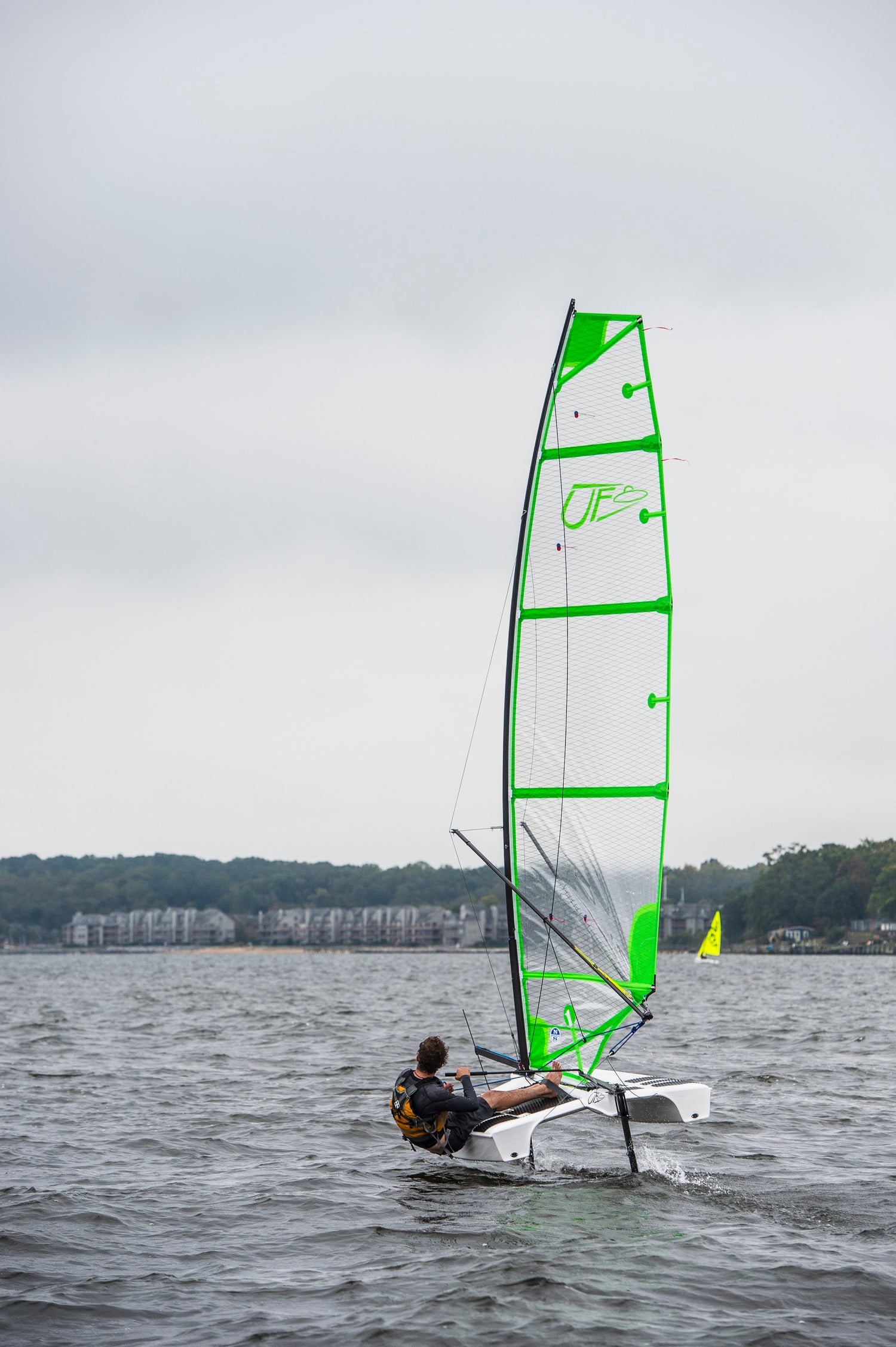
FLY WITH THE UFO
- Designed and built in the USA
- $11,500 USD
- Compatible and rewarding to all skill levels
- Lightweight for easy maneuverability
- Solid, nearly dent-proof, hull
- Unique patented hull and rig designs
- Stable on and above the water
- Small footprint for carefree storage and shipping
- Takeoff from about 8knts of wind
- Fast, fun, easy to control foiling

FUN FOR ALL AGES
The wand system controlling the foils, which can be set to fly very high, very low (even ‘no fly mode’) and all points in between. This means you can progressively add challenges to your UFO experience as you feel ready for them, from ‘beginner mode’ all the way to ‘extreme mode’. Additionally, the highly tunable sail can be set up to provide only the amount of power that your body type needs, and no excess. This means that the UFO is accessible and fun for sailors of all sizes, ages and skill levels. Merely set up the boat for your skill level and body type and go play around.
The UFO is very broadly applicable and has flown payloads from 70 pounds -a tiny kid- to 270 pounds -a tall grown man and a teenage boy-. The foil package just needs power to climb. Ultra light sailors have been caught on camera flying in 5 knots of breeze and the baseline for 225 pound sailors to take off is 10 knots. 270 flies in 12 knots of breeze.
SETUP AND BREAKDOWN
While the boat can be left on shore with everything in place, but the sail down, that doesn’t mean the UFO isn’t easy to put together or take apart. Quite the opposite. Simplicity begets simplicity and the boat is a cinch to put together and take apart.
MANAGEABILITY
Being small is it’s own reward when it comes to handling the boat through all sailing experiences. When you start to really push yourself learning to foil, there are good odds you’ll manage to capsize it. The UFO is easy to right from capsizes and even full “turtle” inversions. This last part is critical, because when catamarans are too heavy to right from turtle the only option is to make the mast float. This has the unintended downside of making the boat very likely to blow away from you. The UFO is designed to stay right alongside you in the event you are separated from the boat. Additionally, the boat possesses an uncommon “park” mode in which it will hold station of its own accord, apparently indefinitely without external input of any kind. The full benefits of that upside have not begun to be fully exploited.

FOILING AT ALL POINT OF SAIL
The Fulcrum design team strictly adhered to the axion “if there’s a point of sail (say, upwind or downwind) that it can’t always foil on, you can’t call it a foiler”. The design team achieved their goal and the UFO is a fully flying boat on all points of sail, which drastically increases its fun-factor.
At what points of sail does the UFO foil at?
The UFO fully foils at all points of sail. Upwind, downwind and reaching. Additionally, you can set it to not foil when you’re tired and it will do that as well, so you can get home easily. These two factors make the UFO uniquely good for learning to foil.
Who can fly the UFO?
Within reason, anyone.
UFO pilots have ranged from 8 years old to 72, from 90 pounds to 235. Young sailors do well sailing as pairs or with a middleweight to light adult. It’s rare that anyone on the fulcrum team conceives of a boat with a narrow niche in mind. Why bother? It’s a mistake in yacht design to design a boat for a narrow range of users, when for the most part people are diverse and the objective of one-design boats is to garner large fleets. That said, the boat is likely to be most satisfactory in all wind conditions in the hands of teens, small and medium men and all women. At the extreme low end of the weight range, sailors may find themselves overpowered and at the extreme high end, the wind speed required for takeoff is about two knots higher than average. UFOs have been sailed “two up” as well, though the above limits of weight range still apply to the sum of the two sailors weights.
What wind and waves can I fly a UFO in?
The UFO will sail in practically any wind condition. However, it’s important to remember that with all sailboats there are days that are great to sail in and days where you do something else.
While the UFO can at times with a skilled skipper take off in very low wind speeds, the baseline for reliable flight is around eight knots. Trying to squeeze enough power to fly out of too little wind is tiresome and in those circumstances, it’s best to do something else. In 8 knots and above, flying is magical and unforgettable. In under 8 knots, the UFO reverts to being a pleasant displacement catamaran and goes from being exciting and fast to relaxing and tactical. This is another benefit of being a catamaran.
Over the last six years the UFO has proven to be uniquely good at flying safely and consistently in very high windspeeds. In multi-class foiling regattas the UFO has proven to be the only foiler built to date that simply loves high windspeeds. In winds above 22 knots when other foiling boats make for shore, the UFO wants to keep playing. The upper wind limit is more a matter of taste and skill. UFOs have been sailed in 36 knots, but that requires a great deal of skill and focus. The UFO rig having shared DNA with a windsurf rig seems to play a part in the boat’s remarkable ability to get a kick out of big wind. Since the upper wind limit on the UFO is so much higher, this makes the number of optimal days to fly a UFO (if skilled in sailing one) higher per year than with any other production foiling boat.
Most chop and wave conditions present no issue for a UFO set for the days’ conditions. After all, powered hydrofoils were first developed by various leading Navy’s as a means of smoothly flying over challenging sea-states. Choking up the ride height helps the UFO fly smoothly through the bottom of the wave pattern, undeterred. Rolling seas present even less issue, as the UFO will ride along them just like any other. Extremely tight and tall chop can be very annoying, which is not peculiar to the UFO.
Waves do effect baseline windspeeds to achieve takeoff. Imagine getting a plane to take off on a bumpy runway. This is true for all hydrofoil boats. In choppy water, ten to twelve knots can be necessary to achieve fully easy takeoffs. Some UFO sailors use aggressive kinetic techniques to overcome this and take off in choppy water and low wind.
Will I fly my first time out?
Most people do, but bear in mind that flying is a whole new experience and it takes some learning.
Conditions, setup and technique matter and if you use it incorrectly, you are likely to get some degree of incorrect results. That’s the challenge that the UFO is built to address. Over six years on the market and over 500 boats delivered, the UFO has proven to be the best and most reliable platform for ordinary sailors to reliably teach themselves foiling technique on.
What happens when I crash my UFO into something?
You’ll probably do some damage to it.
The UFO is built with durability as a core objective but it’s worth noting that the gulf between “Feather light under engineered ragged-edge high performance craft” and “literally indestructible” is extremely wide. The UFO represents neither of these extremes. Do not attempt your first flight inside a densely packed mooring field. Obstacles only make you better once you’ve mastered the basics.
How easy is it to rig a UFO?
Best in class, vs other foiling boats on the market. With that said, it’s not easier than doing nothing. Doing nothing is very easy! Putting a boat together is worthwhile but obviously involves effort.
The current cartop to launched speed record is roughly 15 minutes. Socket the mast together. Attach the boom and stays in one go. Step the rig. Flip the boat on its side, insert the foils, right the boat, hoist the sail and launch. Complexity is best avoided.
Leaving the UFO on a dock or a beach with the rig in and the foils simply in the “up” position, achieves an ease of daily use on par with any light beach cat. To go foiling all you need to do is hoist the sail with the halyard, clip the sail to the boom and attach the downhaul line and you’re ready to launch. This brings setup and breakdown to a matter of five minutes or less.
How do I launch and land a UFO?
Far far far more easily than any other foiling boat on the market.
Because the UFO is a very small catamaran, while floating the hulls float relatively deep in the water and create lateral resistance, like the hulls on a hobie 16 or hobie wave. This means that it can sail upwind without a daggerboard of any kind in the water. This is not the case with non-catamaran foilers. The rudder is outfitted with a friction brake and a down-halyard to allow its depth to vary and allow steering in shallow water. So from 16 inches of water and beyond, you can sail away from and back to shore reliably.
Because the UFO’s forward foil assembly is located in front of the mast, the UFO can tack and gybe while the forward foil is fully withdrawn from the water. This is unique. It allows the UFO to navigate reliably in the period between launching or landing and flying. The benefits for usability and safety cannot be overstated.
Once you’ve got to deep enough water, lower your foils fully and fly away!
That’s if you’re using a dolly.
If you aren’t using a dolly, the UFO has even more party tricks to show off. Since the foils withdraw to above the waterline of the hull, the hull can be beached or slid up onto a dock float or boat deck without any risk to damaging the foils. The UFO is a boat that’s eager to go sailing.
Can I easily cartop a UFO?
At this hull weight, the boat is very easy to put on top of a car, and its flat bottoms allow it to be strapped down hard with no drama. The other components of the boat collapse down to the point of easily fitting in a standard hatchback.
Where can I store my UFO?
Anywhere you can carry it to. Anywhere it fits.
Behind couches, under beds, under porches, in basements, inside larger boats, chained to apartment fire escapes, hanging in garages. Anywhere it can go that’s convenient for your lifestyle is a good place for it to go.
Why does X look like Y? Surely it would be better to make it like Z.
Just trust us.
If you’ve thought of it, we’ve weighed the pros and cons and its been included or excluded for good reason. Creating a boat that can be produced at an affordable price, for a wide range of sailors with a maximum quantity of accessible performance is an extremely hard target to hit. The UFO meets all of its objectives and does so by blatantly ignoring a few conventions and norms. You simply don’t make an omelet without breaking eggs.
- Choosing a selection results in a full page refresh.
- Opens in a new window.

Ready to get started?

Designed with a singular vision...To deliver unmatched performance and efficiency!
Introducing the insetta 35ifc – the bar has been raised.
The Insetta 35IFC was designed with a singular vision… to be the best-performing center console sport fishing catamaran in its class. Enjoy unmatched performance, range, and efficiency thanks to the 35IFC’s hydrofoil-assisted design.
In addition to being the best High-Performance Fishing Catamaran in its class, it also provides a smoother and dryer ride in the rough stuff!
This boat was designed for people who fish, by people who fish! From its integrated livewells to its cavernous coffin boxes, level open deck layout, massive insulated storage and so much more, this boat was designed for maximum range and fishability!
Here’s what our customers have to say: “Holy crap do I love my 35 IFC with the Merc 300 V8’s on the back. We ran her down to Key Largo the other day, snorkeled all day, got lunch at Shipwrecks Bar and Grill, and ran back. Cruised between 40 and 45 mph, mostly around 42. So smooth it’s nuts. Burned maaaayyybe 40 gallons for the whole day. As we cruised the dashboard was telling us between 1.7 and 1.8 mpg, but I’m pretty sure we cruised more than 40 miles and burned between 35 and 40 gallons, no more. So… suffice it to say that you guys have absolutely crushed it and changed the game here. Fantastic work”! – Alan, Hull #4
Check out our FAQ’s section below for more about the Insetta 35 with IFC!
Specifications
Length Overall
Maximum Beam
Maximum Draft
Fuel Capacity
Cruise Speed
Cruise Miles Per Gallon (MPG)
Over 850 miles*
Cruise Range
Standard Features
Standard “Insetta White” Gelcoat Molded in Diamond Non-Skid Tackle Storage Stbd Side Tackle Storage Port Side 19 Gallon Freshwater Washdown/Shower 5 x In Deck Storage Hatch 2 x In Deck Macerated Fish Boxes 625 Qt Insulated Coffin Box, Split Boxes Walk through Transom Access (Door Optional) Two 36 gallon Integrated Transom Livewells Fresh and Raw Water Washdown 34 Rod Holders (gunnels and coffin box) 7 Stainless Gemlux Pull-Up Cleats LED Navigation Lights Boarding Ladder
Recessed Stainless Bow Rail
Helm / Console
Fiberglass Hardtop with Powder Coated Aluminum Supports Tempered Safety Glass Enclosure for Console 6 Integral Rod Holders Built into Rear Support Molded Fiberglass Leaning Post with Rear Face Seating and cooler 3 Wide Helm Seats 6 S/S Cup Holders Storage Box and Rigging Tray on Rear Facing Seat Storage Drawers Under Helm Seats 165 Qt Leaning Post Ice Box Located Under Rear Face Seats
Base Upholstery
Equipment and Electronics
3 Part Internal Foil System
3 Pump Capacity Sea Chest with Dual Livewell Pumps & Raw Water Feed
4 1100 GPH Bilge Pumps (2 in Each Sponson)
Standard Capacities
490 gallon fuel capacity.
625 Qt Insulated Coffin Box with Divider
165 Qt Leaning Post Ice box
Dual 36 Gallon Livewells
19 Gallon Freshwater
Frequently Asked Questions
IFC is Insetta Boatwork's Internal Foiling System.
You can expect a significant increase in cruise speed; Improved handling and stability in rough conditions; Better acceleration; A boat that is less affected by increased payload; A 20-40% increase in fuel efficiency; and a 20-40% further cruise range! Additionally, the IFC technology will also provide a drier ride in choppy conditions and Provide for more responsiveness when turning at speed!
The system is a fixed setup, there is nothing to operate and there are zero moving parts.
The IFC Technology in effect smooths out rough seas by allowing the boat to run from wave crest to wave crest at a relatively smooth and stable attitude. The IFC System creates lift which help to in effect “Carry” the hull higher in the water. The system acts as a set of wings carrying the boat at speed, keeping the hull from having to follow each wave across its entire contour. In other words the surface of the waves have less effect on the hull as the IFC system is lifting the boat. Additionally, the aerodynamic lift created by the catamaran hulls creates even more lift at the bow of the boat, keeping the nose high and preventing the “slamming” or sneezing found in other catamaran hulls.
No, you don’t. The foils are flush mounted to the bottom of the keels of each sponson (as well as up in the tunnel.) At its centerline the main foil of the IFC system is only slightly lower than the keel line. The boat will easily load onto a standard catamaran trailer. There is no big contraption hanging way down under the boat.
Remember, the foils are INTERNAL to the tunnel. At its lowest point the main foil is only slightly lower than the hull and is higher than the props. Because of this the odds of striking the foils are extremely low. The boat is designed to be lifted by the foil. The structural integrity of the foil system is such that the weight of the boat could be supported many times over by the foil. As such, if you did somehow manage to strike the foil on something EXTREMELY SUBSTANTIAL, like a stone shoal, the likely outcome is that you may (in a very worst case scenario) bend or break a foil wing. If that were to happen, you could still operate the boat to port with the remaining foils. The IFC foils are made from a very high-grade stainless steel and designed to meet or exceed relevant guidelines for impact and strength.
As water travels through the tunnel and around the foil, a tremendous vortex is created. This force keeps most debris from being trapped in the tunnel or around the foil. Between the pressure of the air moving through the tunnel, and the vortex created in the water, the tunnel and foils will stay clean and clear.
The outboards of the 35 IFC are mounted on a slight outward angle to place the propellers properly to maximize the thrust and flow efficiency created as the water travels through the tunnel and around the foils. This mounting also helps the boat to lean into a corner, much like a monohull.
Firstly, we’d ask, “Why would you want to?” But the short answer is no. IFC is an integrated system that is integral to the design of the boat.
The short answer is that boats with technology similar to IFC have been in use for many years, but not in the recreational market. Commercial and Military applications are quite prevalent. The initial design of a hull and system like this is quite complex and can be cost prohibitive. We at Insetta feel the gains in efficiency, speed, range and ride quality far outweigh the initial design and build cost.
Upon deciding to build a foiling Cat, Insetta assembled a team of naval Architects and Marine Engineers to refine an existing and proven design. Using their own state of the art construction techniques, Insetta brought an application specific version to the fiberglass Center Console market.
Optional Features
Customizable Garmin or Simrad Electronics JL Audio 10 Speaker Stereo System Flush Mount Acrylic Helm Bow Shade Custom Gelcoat or Combination of Colors Deluxe Upholstery Third Center Livewell Under Rear Facing Seat 40 gallon Seadek Flooring or Flexiteek Decking Additional Gunnel Rod Holders (18 standard) Recessed Wireless Phone Chargers Swivel Base Rod Holders Outlets for Electric Reels Additional Drink Holders on Leaning Post, Coffin Box, Gunnels and Helm Forward/Rear/Side Spreader Lights T-Top Outrigger Bases/Poles Gemlux Electric Head With 19 Gallon Blackwater Holding Tank Freshwater Sink and Vanity Inside Console Underwater Lights Heavy Duty Dive Ladder LED Under Gunnel Lighting On-Board Battery Charger Windlass Custom Aluminum Trailer Cockpit Table/Bow Table
Why did Insetta Boatworks decide to build a boat with IFC?
For decades, Hydrofoil power boats have proven to be the most efficient craft for a variety of offshore operations.
While pursuing a B.S. in physics in 1960, Victor Insetta was employed doing anti-submarine research that utilized high speed Deep-V patrol boats equipped with hydrofoils. Their ability to pursue submarines at high speed, operate safely offshore, and, being foil borne: allowed their hull to run clear of the water avoiding direct hits from torpedoes. Decades later, Vic and his family rode comfortably on hydrofoil ferries in Italy, flying over white capped waves in the bay of Naples.
In 2017, The Insetta 45 was chosen to be the official chase boat of the America’s cup! Four 45’ Insetta’s catamarans were shipped to Bermuda to assist at various cup events. Sailboats, competing from several countries, were catamarans with hydrofoils ! The Insetta 45’s ran parallel to these “foiling sail cats” to assist with TV coverage. The sailing cats were traveling at speeds approaching 50 mph, 2 ½ times the wind speed . Efficient … you bet . They could also turn on a dime at over 40 mph…
It became obvious: that a foiling cat would make a great offshore outboard power boat… Many foil power boat designs in the past, had wide foils that stuck out the sides, increasing their beam and draft. It made them difficult to dock, and they couldn’t operate in shallow waters. Joel Shine (chief operating officer) of Insetta Boatworks found a catamaran design that had hydrofoils mounted in the tunnel, (that location between the tunnel walls actually improves their efficiency), and does not add to its draft. Further improvements could be added by using our ultra-light high strength infused composite construction.
Joel, Vic and our technical staff reviewed the foiling cat’s initial specifications and performance data, and then sea trialed two foiling cats with internal hydrofoils. Our staff includes a second physicist and pilot… Glen Dobbs. We are all active boaters and we determined we would build our version of a foiling outboard powered cat. We contacted a Naval architect, who designed several successful foiling power cats . He is now a member of our technical staff.
Our 35 “foiling cat” design has set the standard for Foil-Assisted Sportfishing boats. The hull, foils, materials, and engines are synergistically combined, to provide: unrivaled high-speed cruising efficiency , and provide safe offshore handling, with unimpeded shallow water operation, including beaching, without foils or props contacting the bottom.
Insetta 35IFC
The premier internal foiling catamaran.

Integrated 36 Gallon Livewells & 625 QT Coffin Box Standard
Designed to fish.

850+ Mile Range!

Best in Class MPG, Smoother/Dryer Ride!
Performance.
Click the button below to contact or email us for more info!
Latest News

The Foiling Press – February 2024
The Foiling Press – February 2024 – February was a busy month for…

The Foiling Press – January 2024
We kicked off the year with a full house here at Insetta Boatworks! Three beautiful 35IFC’s in…

The Foiling Press – December 2023
The Foiling Press – December 2023 – We’ve wrapped up an incredible year…

The Foiling Press – April 2024
The Foiling Press – April 2024 – April has been a month full…

The Foiling Press – March 2024
The Foiling Press – March 2024 – Spring is in the air and…
Get the Latest Insetta News!
- First Name *
- Last Name *
Share this page

Looking for our latest catalog?
F1x A-class foiling catamaran
World champion, lighter = better, craftsmanship, meet the foiling f1x a-class catamaran.
This is the ultimate singlehanded foiling catamaran of the moment: ultramodern, incredibly fast, very agile, extremely strong and feather-light, in an aerodynamic and ergonomic design. The perfect total package, packed in 1 foiling catamaran. This is the world’s coolest boat for singlehanded races and the winner of several A-cat world championships and many other sailing races.
The 2020-F1x A-cat is exactly the same foiling catamaran that made Mischa Heemskerk Vice-World Champion at the Herveybay Worlds 2018 in Australia and World Champion at Weymouth 2019. All our foiling F1x A-class catamarans come straight, ready to race and ‘Mischa-tuned’ from our factory.
Unique design enables top performances
The F1x A-class foiling catamaran is the ultimate reflection of our current design language. The aerodynamic design accentuates the performance qualities of this super fast foiling racing boat. The sophisticated deck plan provides clear control and minimal air resistance.
Foils The rudders and daggerboard foils used on the F1x A-class foiling catamarans are produced with the highest quality carbon pre-preg fibers. The foils are cured in our own Autoclave . Our winning foil design was created in close cooperation with Glenn Ashby and the designers of AC Team New Zealand .
Construction The F1x A-cat is manufactured entirely according to the carbon pre-preg/ Nomex production method, and cured in our Autoclave. This technology is the same as used in the aerospace industry and within other foiling boats like for example, the America’s Cup.
Design The design of the F1x foiling A-class catamaran was completely conceived by the DNA design team and made at DNA’s own yard. In the DNA design team Pieterjan Dwarshuis, Mischa Heemskerk and the renowned Dutch industrial design engineer Rudo Enserink worked closely together to create the perfect foiling A-class catamaran.
We build your new foiling boat!
Technical details.
The F1x A-class foiling catamaran has a number of unique features that improve performance. For example:
- Semi ridged trampoline. Gives extra torsional stiffness to the boat and increases its aerodynamic characteristics.
- Patented main-sheet-wheel-system. For more direct and faster trim of the main sail.
- Aerodynamically placed traveller car.
- Flexible daggerboard casings. For minimal water absorption in floating mode.
- Aerodynamically shaped ‘beams’.
- Adjustable T-rudders. Foiling with rudder differential is possible.
Specifications
LOA: 5.49 m BOA: 2.30 m Max. draught: 1.20 m Sail area: 13.94 m Total weight: ca. 53 kg Top speed: 31 kn Extra: All measurements according to IACA Class regulations.
Buy a champion's boat!
Are you excited to buy a F1x A-class foiling catamaran from DNA Performance Sailing? Please fill in our contact form:
Yes, I want a F1x A-cat!
Schrijf je in voor onze nieuwsbrief en blijf op de hoogte van de nieuwste ontwikkelingen.
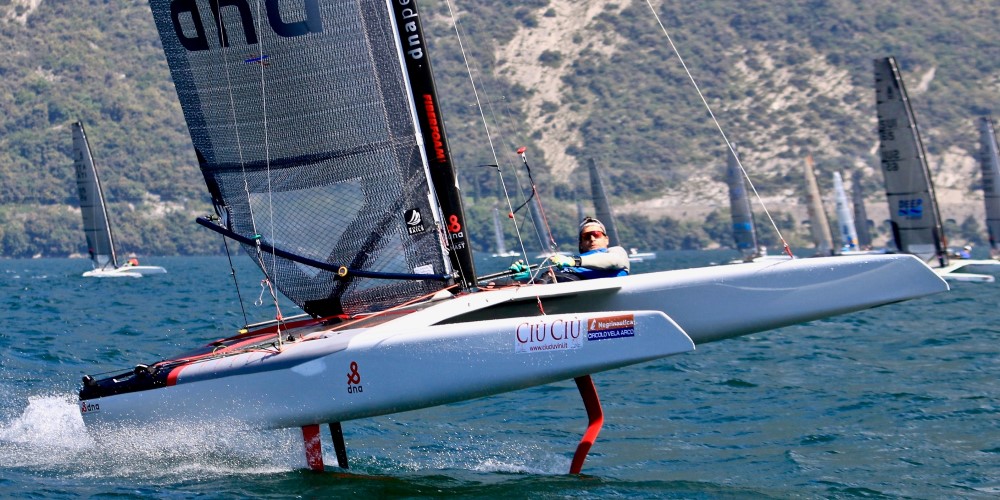
Contactformulier
- Company Name
- Full name * First Last
- Emailaddress *
- Phonenumber *
- Mijn vraag betreft * My question: TF10 F1x G4 F4 Custom Parts Hydrofoils Other
- Name This field is for validation purposes and should be left unchanged.
Registrieren Sie sich für unseren Newsletter
lassen Sie sich über die neuesten Entwicklungen informieren!
- E-Mail-Adresse *
- Phone This field is for validation purposes and should be left unchanged.
Schrijf je in voor onze nieuwsbrief
blijf op de hoogte van de nieuwste ontwikkelingen!
- First name *
- Last name *
Wij gebruiken cookies om u de beste online ervaring te bieden. Door akkoord te gaan, accepteert u het gebruik van cookies in overeenstemming met ons cookiebeleid.
Wanneer u een website bezoekt, kan deze informatie in uw browser opslaan of ophalen, meestal in de vorm van cookies. Beheer hier uw persoonlijke cookiediensten.
- wordpress_test_cookie
- wordpress_logged_in_
- wordpress_sec

The New Befoil 16 Sport Catamaran Finally Unveiled

Do you remember the Voilavion ? Befoil 16 came from this R & D project, imagined by Benjamin Magnard, aiming to create a hydrofoil boat equipped with a tilting mast, which flew from its first sea trials.
Specifications were drawn up in collaboration with VPLP, a naval architecture firm whose reputation is well established, to create a hydrofoil catamaran that is easy to use and accessible to all: the Befoil 16. It is a 16-foot hydrofoil catamaran designed for lovers of new sensations and sailing schools, which is easy to handle, and which, thanks to its large surface area and stability, allows safe navigation over water.

The new Befoil 16 Sport
Made in Europe and assembled on the premises in Lorient, the Befoil 16 Sport is a high-quality construction thanks to the infusion manufacturing process.
This sportier version was launched at the end of 2020. The 16 Sport is lighter, stiffer and more canvasy, for performance on the water. Intended for private individuals and sailing schools, this hydrofoil catamaran adapts to all sailing programmes, to learn how to fly on the water easily and to fill up with sensations.

With its self-regulating T-foils and its 2 load-bearing rudders and glass/epoxy hulls, the Befoil 16 Sport is the latest addition to the Befoil series. In trapeze sport mode, or in comfort mode with theoptional ladders, the 16 Sport provides a great feeling of speed. The boat takes off from 8 knots and can reach up to 20 knots.

Benjamin Magnard, president of Befoil adds: “ Everyone dreams of flying on water! Thanks to the Befoil 16 Sport, all flying boat enthusiasts – whatever their level – can take off as soon as the weather is light, combining pleasure and speed! “.
The 16 Sport recently took off thanks to its distinction as “Foiler of the Year 2021” by French magazine Voile Magazine.
Milestone Year for Wally: Countdown to the Launch of wallywind110 and wallyrocket51
Spirit yachts announces new contemporary q class yacht project, outremer celebrates the launch of lorient’s first outremer 45 zoulpi, the first hybrid electric nautor swan 88 launched, live your passion, subscribe to our mailing list.

- Fire Rescue
- Passenger Ferries & Excursion Vessels
- Pilot Boats
- Military Boats
- Law Enforcement
- Utility & Work Boats
- Inland Commercial Vessels
- Windfarm Support Vessels
- Other Commercial Vessels
- Metal Shark Yachts
- Autonomous Vessels
- Recreational Boats
- Passenger Ferries
- Monohull Pilothouses
- Center Consoles
- Towboats & Pushboats
- Metal Shark – Jeanerette
- Metal Shark – Franklin
- Company Contacts
- Construction
- The Metal Shark Advantage
- Training & Support
- Replacement Parts
- Supplier Portal

40 Foil-Assisted Catamaran
Typical specifications.
LOA: 40’ BOA: 14’
For detailed specifications, contact us today.
The “Flying Hub II” shown here is a 40-foot custom welded-aluminum passenger vessel designed by Jutson Marine Design and built by Metal Shark for a Florida-based fishing and tour boat operator. This innovative vessel features a highly efficient foil-assisted catamaran hull and has been built to USCG Subchapter T standards.
Hull Design
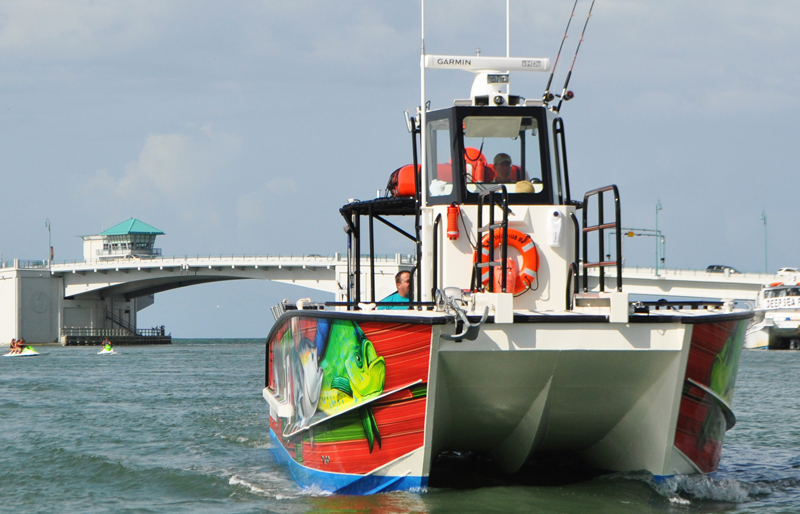
Deck Layout
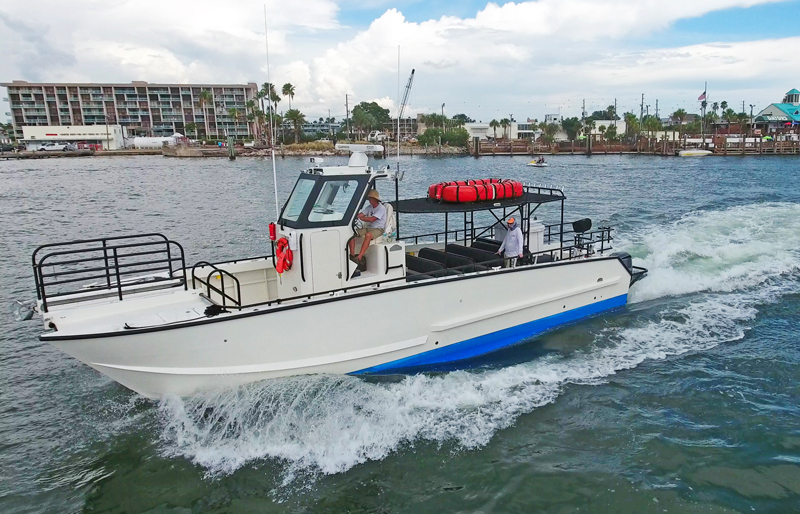
40 Foil-Assisted Catamaran Image Gallery
PowerCat – Above the Waves
The art of catamaran building new defined.
Chart your own course and discover the limitless possibilities of the open waters with PowerCat. Renowned for our expert craftsmanship and visionary design, we engineer power catamarans that redefine performance, efficiency, and comfort.
PowerCat – Where Innovation Meets the Sea
Every PowerCat vessel is a testament to our commitment to innovation and our passion for the sea. Our Diesel, Electric, Hybrid, and Solar Catamarans can all be fitted with our groundbreaking Maritime Advanced Range System (M.A.R.S) – a hydrofoil assisted system that exemplifies our pioneering spirit.
From meticulous design to precision engineering, our range of PowerCats showcases a perfect balance of weight distribution, stability, and speed. Our boats are lightweight powerhouses, designed to be up to 50% lighter than their closest competitors. This results in extraordinary fuel efficiency and higher speeds, even with smaller engines.
At PowerCat, we believe that safety and comfort should never be compromised for performance. Every PowerCat is built with safety at its core, featuring isolated waterproof regions, advanced electronic management systems, and continuous motor monitoring. Our interiors offer unmatched comfort, providing a perfect space for relaxation, entertainment, and the creation of lasting memories.
Explore our range of models, such as the exceptional PowerCat 8 , and experience the PowerCat difference. Here, luxury meets efficiency, and the horizon is just the beginning. Embark on your next adventure with PowerCat. Sail beyond the ordinary.

- FlySafe ® Foil Control
- iFLY Reviews
- Our Partners
- Distributors
- Class Association

Enter your keyword
Ifly15 «ultimate» full carbon, onedesign & razzor (formula foil):.
Hulls in full carbon sandwich, epoxy resin, Equipped with FlySafe® active foil control, the most advanced flight control system. Rudders, daggerboards, foils : full carbon with titanium core structure, compression molded at 40t, Double layer wing trampoline, Softwing rig, as an option. Mainfoil differential T-Foils (MDT), as an option. CodeF auxiliary lightwind headsail, as an option.
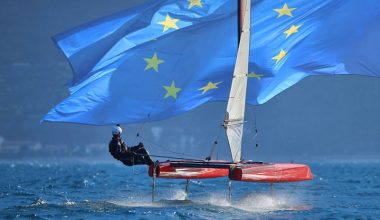
iFLY15 «Ultimate» Full carbon
ex tax, ex fact.
Designed in Germany Production in Western Europe.
11.2 sqm Decksweeper mainsail , Mylar / Pentex laminate,
7.5m aluminum mast , black anodized
7.5m Fiberfoam Carbon mast, as an option
XXL lightwind rig on 8.5m mast , as an option
A-class rig on 9m carbon mast , as an option
visible natural carbon: crossbeams, boom, foils, flight controls, tiller stick …
double layer wing trampoline: black mesh, red or black foot belts
iFLY15 hull colors 2024:
Ferrari – red Formula1 – yellow Brilliant – white Graphit – grey
Any other color is possible, on demand. With our professional art and paint team, we can realize any individual color and special designs, including sophisticated group or team designs.
options and accessories
Rig options.
Option: Fiberfoam Carbon mast, 7.5m, iFLY specific design, based on a-class design : 2.400 €
- by choosing this option, the iFLY serial mast (black anodized aluminum) is replaced by a high-tech Fiberfoam carbon mast. The carbon mast reduces weight by 4.7kg and increases sailing performance. However, the carbon mast is not recommended for double trapezing
Option: separable mast : 490 €
- The joint is made with a massive carbon sleeve inside. We did not observe any performance loss. The upper 2.25m of the mast can be taken off within seconds. No tools needed. It can be done without removing shrouds or diamonds and allows solving storage problems. Further this option can reduce shipping cost e.g. for overseas transport. Some sailors with height restrictions in the port or on their way to the water solve this by reducing thus the boat hight to 5.8m.
Option: Softwing rig for highest performance : 2.400 €
- iFLY is delivered with a state of the art decksweeper rig (like this year’s A-class sails). By choosing this option, the standard sail is replaced by the Heru Softwing rig: a three-dimensional structure bringing performance gains. Very different than a solid wing (as used e.g. in AC50 / C-Class) the softwing is not fragile and can be rolled and hoisted like a standard sail. It is watertight and thus floating, making righting up after a capsize even easier.
Mainsail halyard : 270 €
- iFLY comes with a push up main sail hoisting system (A-class style). Sailors who choose the standard decksweeper sail are free to choose the hoisting system they love more. For boats configured with the Softwing, halyard is strongly recommended.
auxiliary head sail for early take off in light winds. The revolutionary lightwind headsail. New developed sail configuration based on Genoa/Code0:
- The CodeF is a light wind head-sail used from 0 to 10 knots. This sail is used both, upwind and downwind, to get earlier on the foils. It is stowed away if wind picks up. CodeF is an option for super light wind. Usually You will sail the iFLY15 just with the mainsail.
CodeF preparation : 560 €
- riveted and screwed cleats, lamination in hull: bow tube. CodeF preparation is needed for CodeF sailing. The option should be ordered, in case CodeF kit will be added later.
CodeF premium option: surcharge : 580 €
- High-end version of CodeF, made from a kevlar fiber laminate
Second set of length adjustable trapeze, for double trapezing: surcharge : 220 € (per piece)
- Double trapezing is not recommended with carbon mast.
- Massive increase of righting moment allows performance gains of up to 25%, especially when full foiling upwind
additional Accessories:
Foot strap, length adjustable, including assembly (per piece) : 69 €
Telescopic carbon tiller stick, surcharge: 210 €
Hydrodynamic tips for rudders – to sail with removed horizontal wings in classic (non-foiling) mode with minimum drag: 67 € (per piece)
Hydrodynamic tips for daggerboards – to sail with removed horizontal wings in classic (non-foiling) mode with minimum drag: 86 € (per piece)
Big wheel beach trolley : 665 €
Cradles for road trailer, with universal mount – two versions available, flat bed or for round profile 50mm diameter: 215 € (per pice)
Foldable maintenance bench : 140 €
Spare parts kit : 240 €
Action cam stick : 280cm long carbon tube with special mount for filming e.g. from behind the boat: 150 €
Measuring gauge for precise assembly of mainfoil : 72 €
Measuring gauge for precise assembly of rudderfoil : 62 €
iFLY road trailer, Harbeck CS750, diagonal model, optional with aluminum storage box 285X85X45cm, lockable: price on demand
Shipping and assembly optionS
Pre-assembly in factory Portugal : 1.064 €
R oad transport within Europe: flat rate: 1.600 €
Shipping worldwide: individual offer
Complete assembly “ready to fly”, onsite, personal delivery 98 0 €
- including training on technical features, maintenance… (price for one day, plus travel cost)
Private coaching onsite, one day : 980 €
- only available together with “ready to fly” option)
Customization:
With our professional art and paint team, we can realize any individual color and special designs, including sophisticated group or team designs)
Individual color / any RAL color available: from/to : 600 € – 1.000 € (individual offer)
Individual design for hulls: from/to : 1.200 € – 3500 € (individual offer)
Special 2023 design: “Flying Tiger” , including individual choice of colors: 2.912 €
Individual design for sails, from/to : 600 € – 2400 € (individual offer)
(all prices are ex tax, ex factory Porto, Portugal. August 2023, subject to change without notice.) AGBs
Catamaran Europe Central
The iflysail team, is looking forward to your message.

Support our hydrofoil educational content for free when you purchase through links on our site. Learn more
[2023] Hydrofoil Yacht: The Ultimate Guide to Sailing on Foils
- November 1, 2023
- Hydrofoil Basics
Quick Answer: A hydrofoil yacht is a sailboat equipped with wing-like foils that lift the hull out of the water as it gains speed. This reduces drag, increases speed, and provides a smoother ride. Hydrofoil yachts can be retrofitted on both monohull and multihull sailboats, with different types of foils used for stability and control.
Welcome to Hydrofoiling™, where we bring you all the latest and greatest information about hydrofoil boarding. In this comprehensive guide, we’ll dive into the world of hydrofoil yachts, exploring their history, configurations, classes, and more. Whether you’re a seasoned sailor or a curious beginner, this article will provide you with expert advice and insights into the exciting world of hydrofoil yachts.
Table of Contents
Quick answer, quick tips and facts, background: the evolution of hydrofoil yachts, types of hydrofoil yachts, hydrofoil classes: from moths to ac75, hydrofoil yacht brands and models, advantages and disadvantages of hydrofoil yachts.
- Recommended Links
- Reference Links
A hydrofoil yacht is a sailboat equipped with wing-like foils that lift the hull out of the water as it gains speed. This lifting action reduces the wetted area of the hull, minimizing drag and allowing the yacht to achieve higher speeds. Hydrofoil yachts can be retrofitted on both monohull and multihull sailboats, with different types of foils used for stability and control.
Shopping Links: Check out hydrofoil yacht products on Amazon | Shop hydrofoil yacht on Walmart | Etsy hydrofoil yacht products
- Hydrofoil yachts use foils to lift the hull out of the water, reducing drag and increasing speed.
- Different types of foils, such as T foils, C foils, S foils, and L foils, are used for stability and control.
- Hydrofoil yachts can be retrofitted on both monohull and multihull sailboats.
- The International Moth class is one of the most widespread uses of hydrofoils in sailboats.
- Hydrofoil yachts can achieve impressive speeds, with some reaching over 50 knots.
Hydrofoil technology has been around for over a century, with the first patent for a hydrofoil boat filed in 1898 by Italian engineer Enrico Forlanini. Since then, hydrofoil yachts have undergone significant advancements, transforming the sailing experience and pushing the boundaries of speed and performance.
The concept behind hydrofoil yachts is simple yet ingenious. By using wing-like foils mounted under the hull, these yachts can lift themselves out of the water as they gain speed. This lifting action reduces the wetted area of the hull, minimizing drag and allowing the yacht to glide effortlessly through the water.
Hydrofoil yachts come in various configurations, each designed to optimize performance and stability. Let’s explore some of the most common types of hydrofoil yachts:
Monohull Hydrofoil Yachts : Monohull hydrofoil yachts feature a single hull and employ a “ladder” arrangement of hydrofoils. These hydrofoils typically have a dihedral angle of around 50 degrees and are complemented by a stabilizing rudder foil. This configuration provides stability and control, allowing the yacht to sail smoothly on foils.
Multihull Hydrofoil Yachts : Multihull hydrofoil yachts, such as catamarans and trimarans, offer increased stability and performance. These yachts use wider planforms, allowing for greater lift and control. Some multihulls utilize three foils, with two main forward foils providing lift and a horizontal foil on the rudder for additional control.
Hydrofoil Catamarans : Hydrofoil catamarans, also known as foilcats, combine the stability of a catamaran with the speed and efficiency of hydrofoils. These yachts can achieve impressive speeds while maintaining excellent stability, making them popular choices for racing and recreational sailing.
Hydrofoil technology has found its way into various sailing classes, revolutionizing the way we sail. Let’s take a closer look at some of the notable hydrofoil classes:
International Moth : The International Moth class is one of the most widespread uses of hydrofoils in sailboats. These single-handed dinghies feature foiling capabilities, allowing sailors to achieve incredible speeds and maneuverability. The class has seen rapid growth since 2001, with carbon fiber foils and advanced design techniques pushing the boundaries of performance.
Waszp : The Waszp class is similar to the International Moth class but utilizes aluminum foils instead of carbon fiber. This makes the Waszp more accessible to a wider range of sailors while still providing the exhilaration of foiling.
AC75 : The AC75 is a foiling monohull sailboat class used in the 2021 America’s Cup. These impressive yachts can reach speeds of up to 50 knots, showcasing the incredible potential of hydrofoil technology in the world of competitive sailing.
IQFoil : The IQFoil windsurfer class was selected by World Sailing for the 2024 Summer Olympics. These windsurfers feature hydrofoils, allowing athletes to glide above the water and achieve impressive speeds.
IMOCA 60 : Originally designed as non-foiling offshore racers, the IMOCA 60 class has embraced hydrofoil technology. These yachts now feature S-shaped daggerboard foils, providing partial foiling capabilities and enhancing performance in various conditions.
F50 : The F50 sailboat class is used in the SailGP series and is the first sailboat class to break the 50-knot barrier during a race, with a top speed of 52.2 knots. These high-performance catamarans showcase the incredible speed and agility that hydrofoil technology can offer.
Several brands have embraced hydrofoil technology, offering a range of hydrofoil yachts to cater to different sailing preferences. Here are some notable hydrofoil yacht brands and models:
Gunboat : Gunboat is a renowned brand in the world of luxury hydrofoil yachts. Their models, such as the Gunboat 68 and Gunboat 72, combine performance, comfort, and elegance, providing an exceptional sailing experience.
GC32 : The GC32 is a hydrofoil catamaran designed for high-performance racing. This foiling catamaran offers thrilling speeds and precise control, making it a favorite among competitive sailors.
AC72 and AC45f/AC50 : These hydrofoil catamarans were used in the America’s Cup, showcasing the cutting-edge technology and innovation in the world of hydrofoil yachts. These yachts pushed the boundaries of speed and performance, captivating sailing enthusiasts worldwide.
Nacra 17 and Nacra F20 : Nacra is a well-known brand in the world of multihull sailing, and their Nacra 17 and Nacra F20 models feature hydrofoil capabilities. These yachts offer a perfect balance of speed, stability, and maneuverability, making them popular choices for recreational and competitive sailing.
Hydrofoil yachts offer a range of advantages that make them appealing to sailors seeking speed, performance, and an exhilarating sailing experience. However, they also come with some drawbacks. Let’s explore the pros and cons of hydrofoil yachts:
Advantages:
Increased Speed : Hydrofoil yachts can achieve impressive speeds, thanks to reduced drag and increased lift. This allows sailors to cover more distance in less time, making hydrofoil yachts ideal for racing or simply enjoying the thrill of speed on the water.
Smooth Ride : By lifting the hull out of the water, hydrofoil yachts provide a smoother and more comfortable sailing experience. The reduced contact with the water minimizes the impact of waves and chop, resulting in a smoother ride even in rough conditions.
Improved Efficiency : Hydrofoil yachts are more efficient than traditional sailboats, thanks to reduced drag and improved lift. This increased efficiency translates to better performance and reduced energy consumption, making hydrofoil yachts an environmentally friendly choice.
Disadvantages:
Complex Design : Hydrofoil yachts require a more complex design compared to traditional sailboats. The addition of foils and the associated control systems can increase the complexity of the yacht, requiring more maintenance and potentially higher costs.
Learning Curve : Sailing a hydrofoil yacht requires a certain level of skill and experience. The handling and control of a hydrofoil yacht can be more challenging compared to traditional sailboats, requiring sailors to adapt to the unique characteristics of foiling.
Higher Costs : Hydrofoil yachts, especially high-performance models, can come with a higher price tag compared to traditional sailboats. The advanced technology, materials, and design required for hydrofoil yachts contribute to their higher cost.
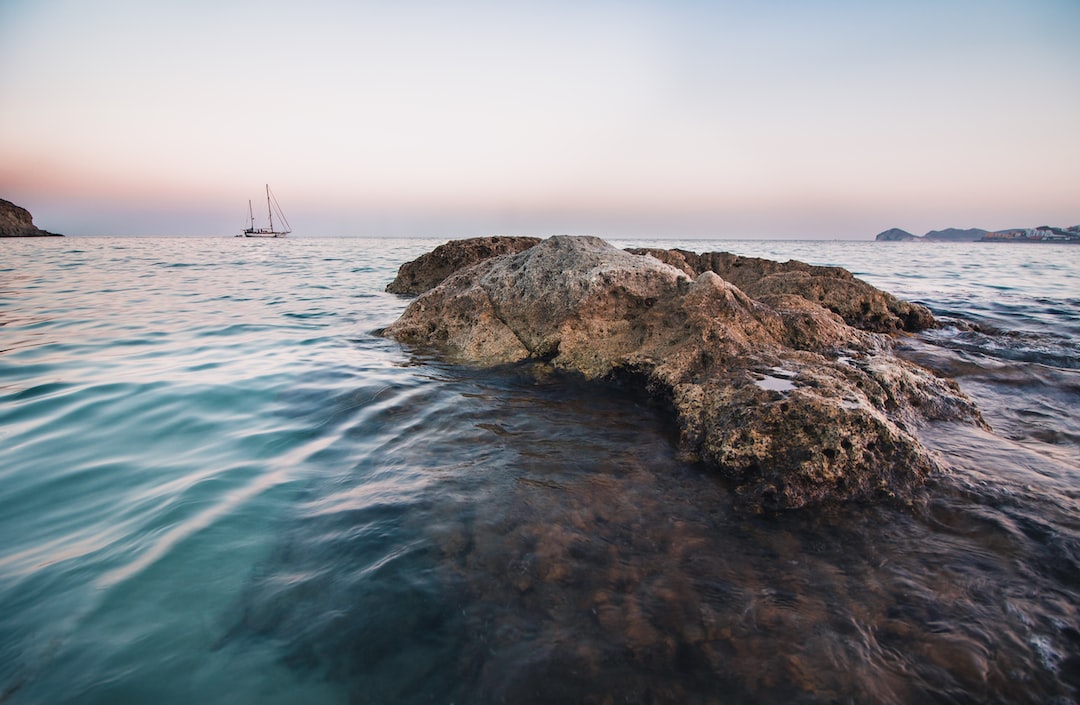
How fast is the hydrofoil racing yacht?
Hydrofoil racing yachts can achieve impressive speeds, with some models reaching over 50 knots (57.5 mph or 92.6 km/h). The F50 sailboat class, used in the SailGP series, holds the record for the fastest sailboat class, with a top speed of 52.2 knots (60 mph or 97 km/h).
What does a hydrofoil do to a boat?
A hydrofoil lifts the hull of a boat out of the water as it gains speed. This reduces the wetted area of the hull, minimizing drag and allowing the boat to achieve higher speeds. The lifting action of the hydrofoil also provides a smoother ride by reducing the impact of waves and chop.
Read more about “… Hydrofoil Catamaran: The Ultimate Guide to Foiling on Water”
How fast do hydrofoil boats go?
Hydrofoil boats can reach impressive speeds, depending on their design and purpose. Racing hydrofoil yachts can achieve speeds over 50 knots (57.5 mph or 92.6 km/h), while recreational hydrofoil boats can reach speeds of 20-30 knots (23-34.5 mph or 37-55.5 km/h) or more.
Why don’t boats use hydrofoils?
While hydrofoils offer significant advantages in terms of speed and efficiency, they also come with certain limitations. The complex design and higher costs associated with hydrofoils can be prohibitive for some boat owners. Additionally, the handling and control of hydrofoil boats require a certain level of skill and experience, making them less accessible to novice sailors.
Read more about “… Why do boats not use hydrofoils?”
Hydrofoil yachts have revolutionized the sailing experience, offering increased speed, improved efficiency, and a smoother ride. Whether you’re a competitive sailor looking for the thrill of high-speed racing or a recreational sailor seeking a more exhilarating sailing experience, hydrofoil yachts provide an exciting and innovative option.
Recommended Links:
- Hydrofoil History
- Advanced Hydrofoiling Techniques
- Hydrofoil Equipment Reviews
- How Do Hydrofoils Work on Boats? 2023
Reference Links:
- Sailing Hydrofoil – Wikipedia
- Gunboat Official Website
- Nacra Official Website
- SailGP Official Website
- America’s Cup Official Website
Now that you have a comprehensive understanding of hydrofoil yachts, it’s time to set sail and experience the thrill of foiling firsthand. Whether you’re racing on the high seas or cruising along the coast, a hydrofoil yacht will take your sailing adventures to new heights. Happy foiling!
Disclaimer: The information provided in this article is based on research and personal experience. Hydrofoiling™ is not affiliated with any specific brand or product mentioned in this article. Always consult with experts and follow safety guidelines when engaging in hydrofoil activities.
Review Team
The Popular Brands Review Team is a collective of seasoned professionals boasting an extensive and varied portfolio in the field of product evaluation. Composed of experts with specialties across a myriad of industries, the team’s collective experience spans across numerous decades, allowing them a unique depth and breadth of understanding when it comes to reviewing different brands and products.
Leaders in their respective fields, the team's expertise ranges from technology and electronics to fashion, luxury goods, outdoor and sports equipment, and even food and beverages. Their years of dedication and acute understanding of their sectors have given them an uncanny ability to discern the most subtle nuances of product design, functionality, and overall quality.
Related Posts
What does foiling feel like [2024] ✨.
- May 15, 2024
How do you ride a hydrofoil? [2024] 🏄♂️
Hydrofoil buyer’s guide: everything you need to know [2024] 🌊.
- May 12, 2024
Leave a Reply Cancel Reply
Your email address will not be published. Required fields are marked *
Add Comment *
Save my name, email, and website in this browser for the next time I comment.
Post Comment
Trending now

Let us introduce: P-12 Shuttle
It’s 100% electric, and flies above the surface., speeding up maritime electrification, and re-imagining your time on the water., hydrofoiling electric boats and ferries, made in sweden..
Transforming transport on the water with technology; enabling electrification and vastly improving performance vs. combustion engines.
Latest news
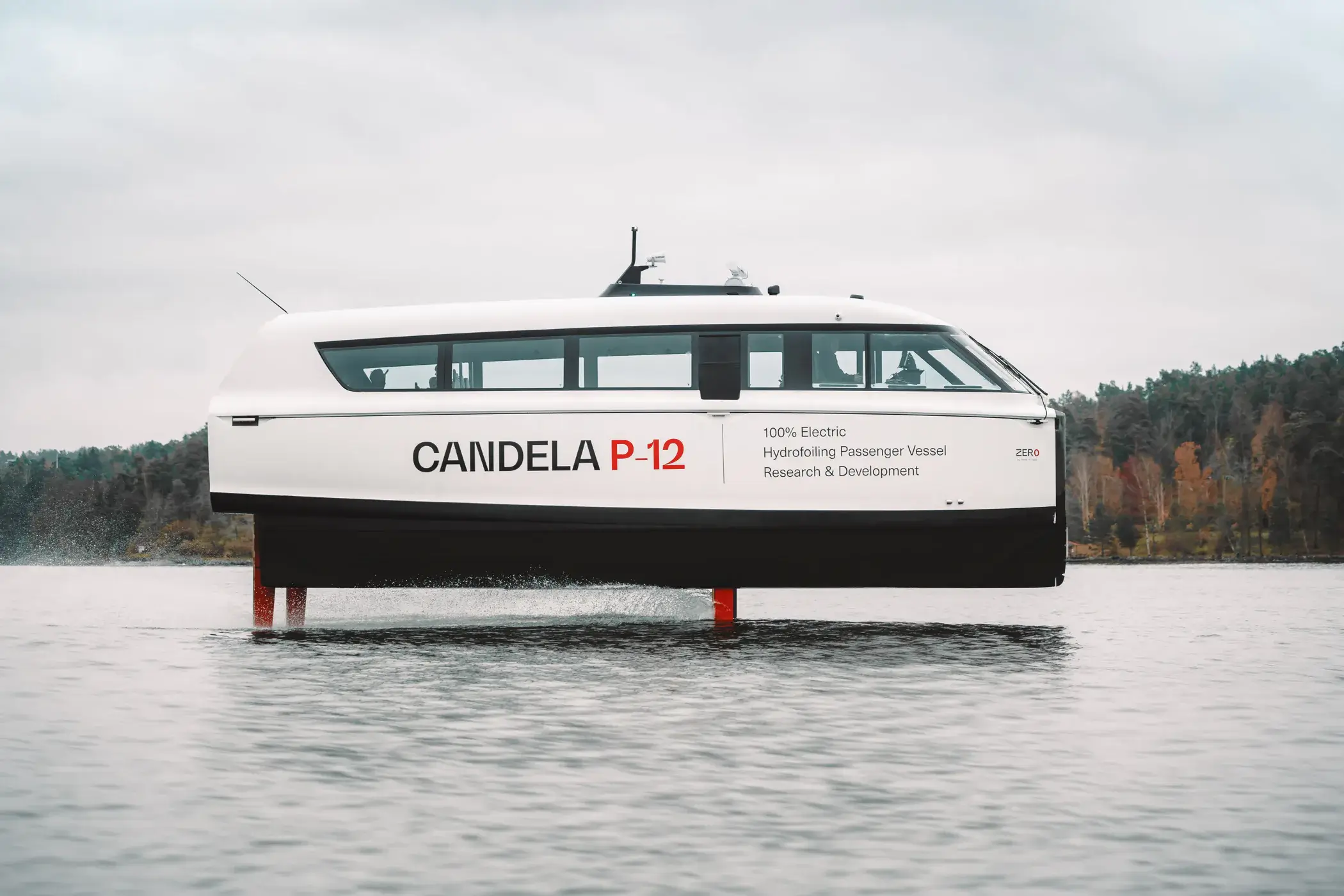
The P-12 has taken flight
A world record.
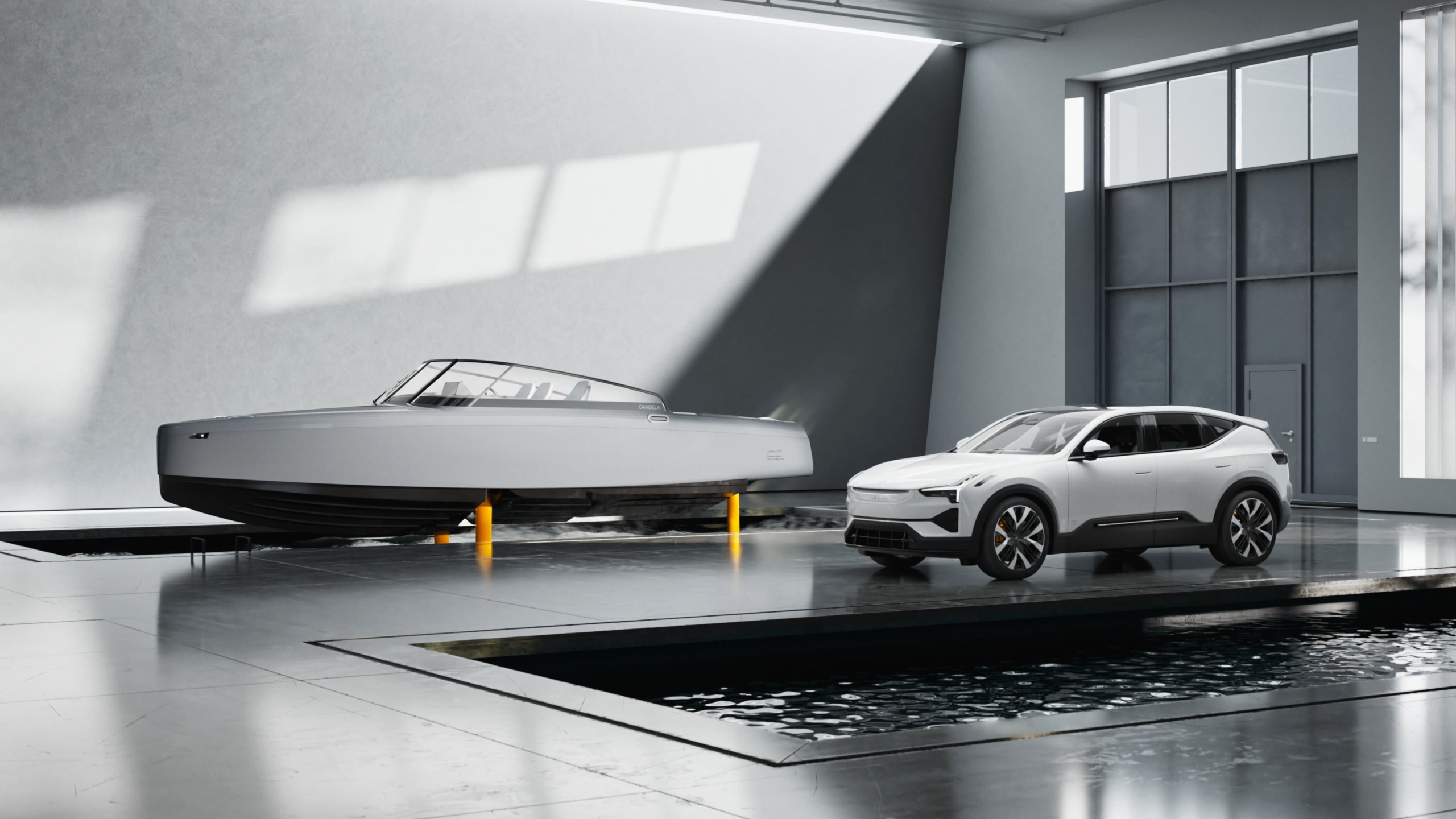
C-8 Polestar Edition
Our boats in action.
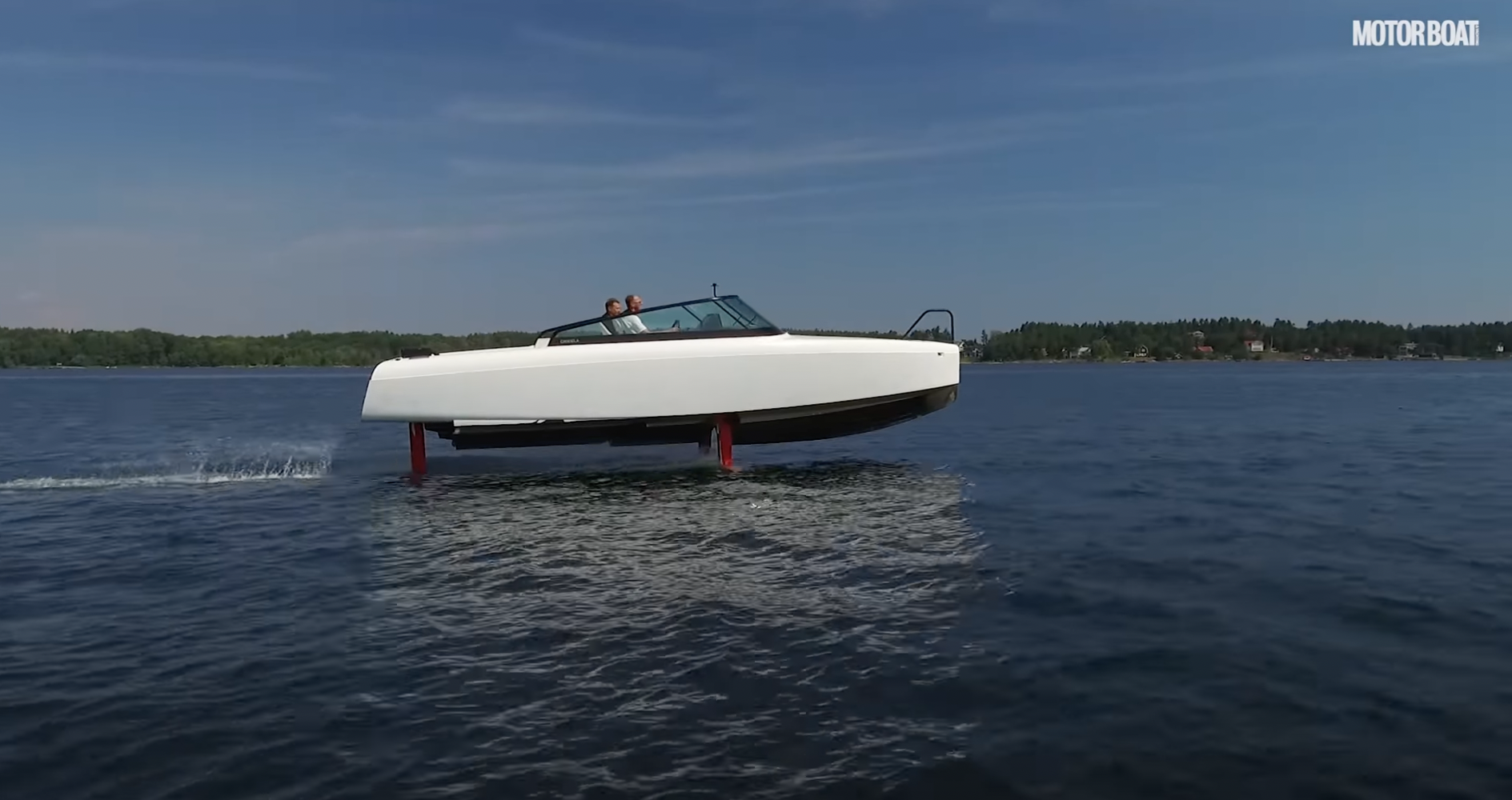
MBY’s review of C-8
Watch Motorboat & Yachting’s amazing review of Candela C-8.
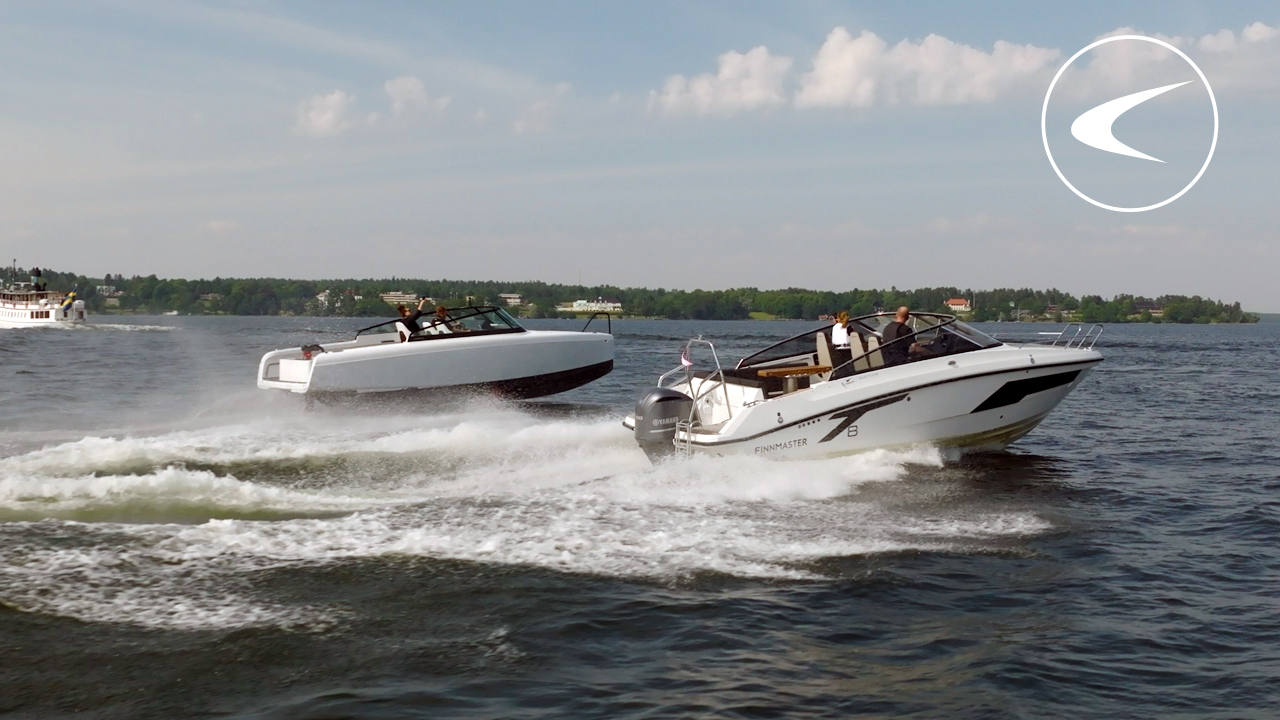
Candela C-8 vs planing boat in waves
We tested wave management in the Candela C-8 alongside a conventional motorboat to see the difference.
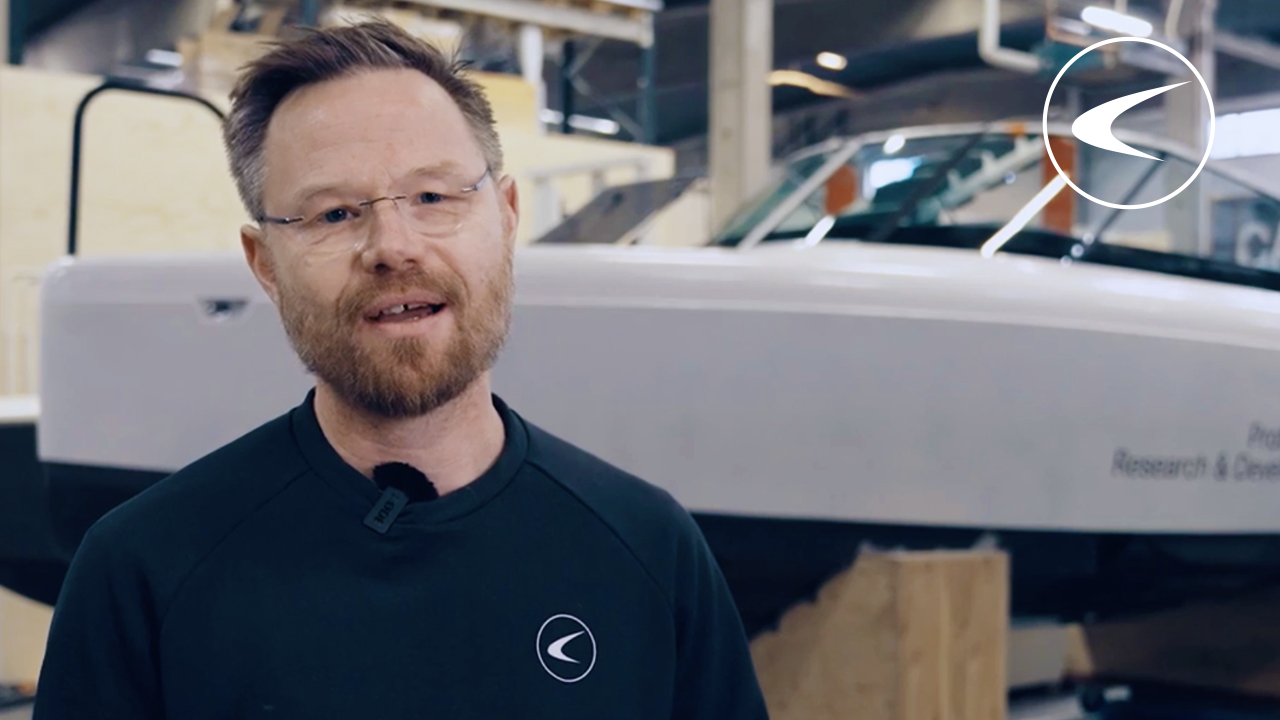
Candela C-8’s first flight
See the world’s most anticipated electric boat in action from when we tested out C-8 Prototype 01.
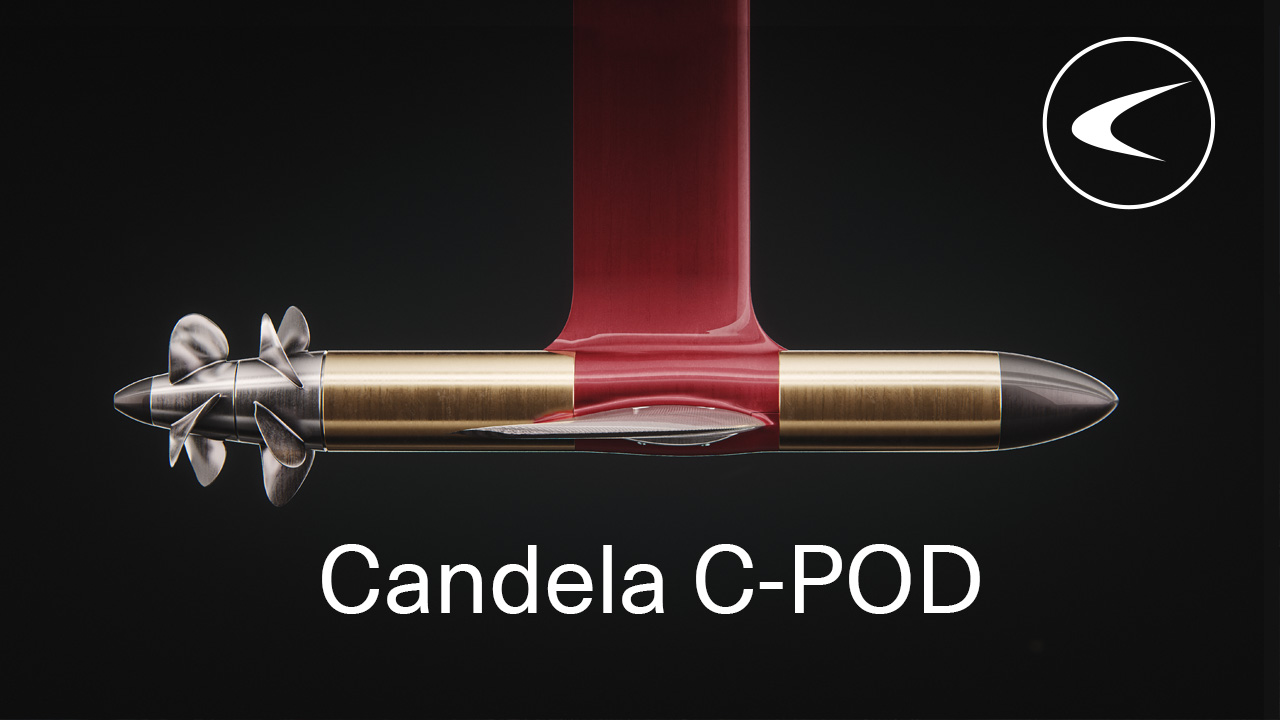
Candela C-POD | The world’s most efficient boat motor
Meet Candela C-POD, the most efficient and long-lasting boat motor ever made. Designed in-house at Candela.
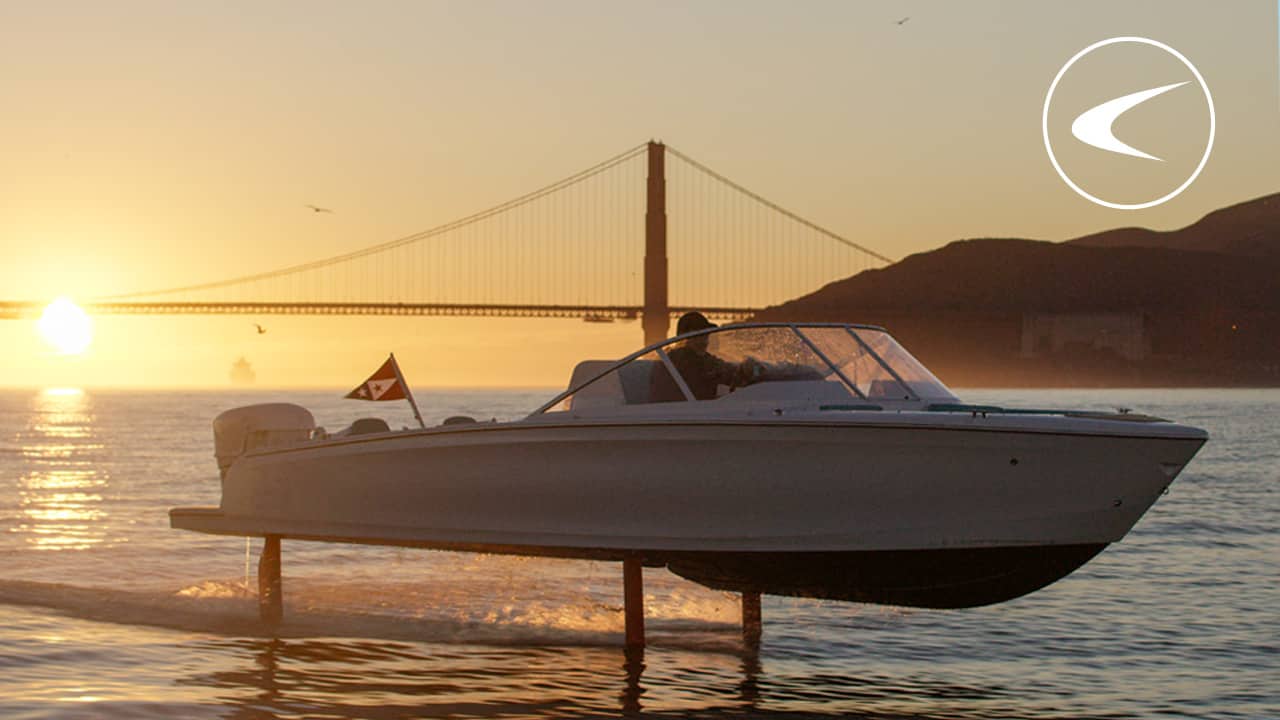
World’s first electric hydrofoiling boat flying in San Francisco | Candela C-7
We couldn’t resist the Bay Area sunrise for an early morning cruise.
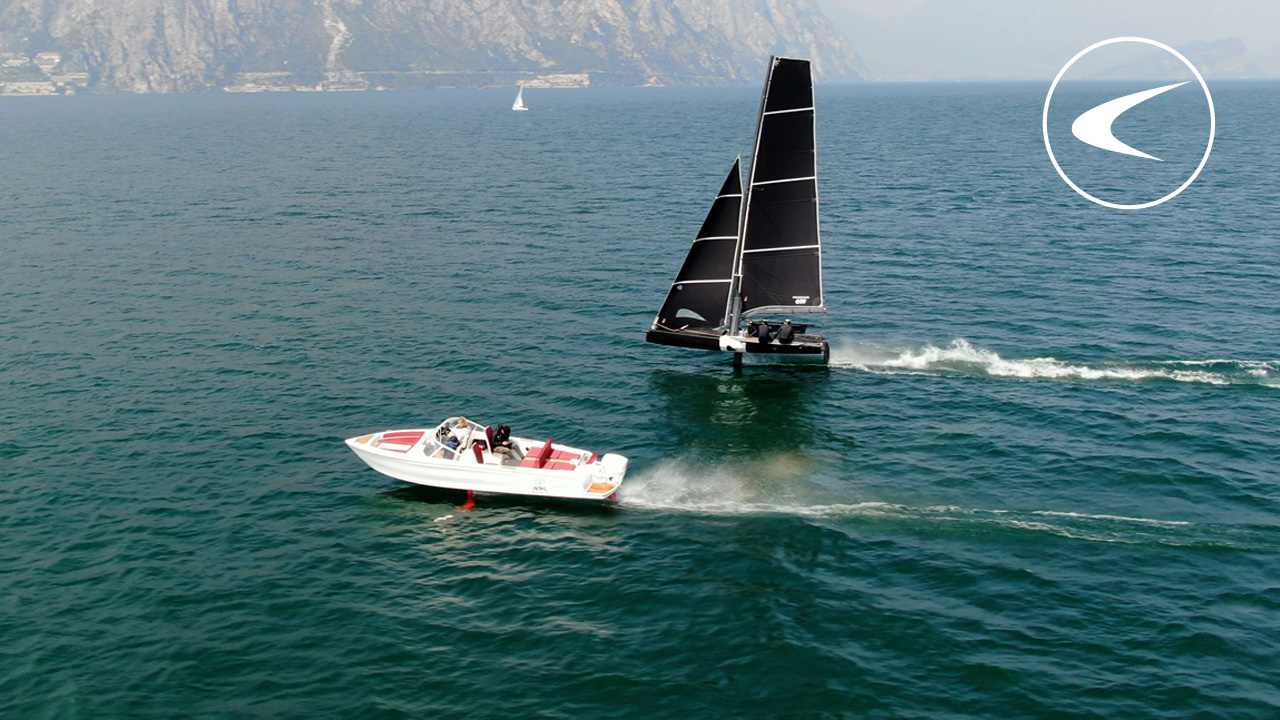
Foiling Double Up
Watching the speedy 69F Sailing boat fly next to Candela C-7 is to see into the future.

Virtual Test Drive
Follow along on a virtual test drive on a beautiful Swedish evening in May.

Candela C-7 | Formation Flying
Enjoy this thrilling FPV drone footage of the Candela Seven, the world’s first foiling electric boat.
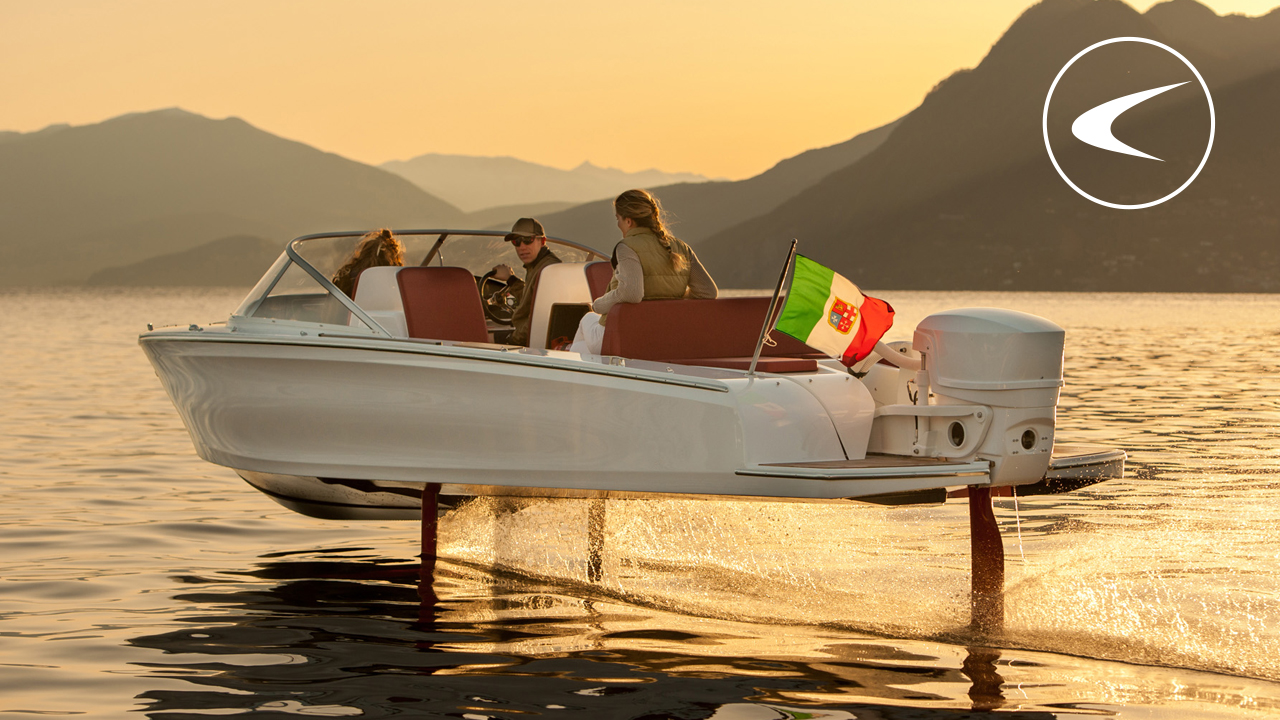
C-7 Sunbed edition in Italy
The brand-new Candela C-7 Sunbed Edition: Marrying zero-emission, high-speed foiling to all the traditional features needed for a great day on the water.
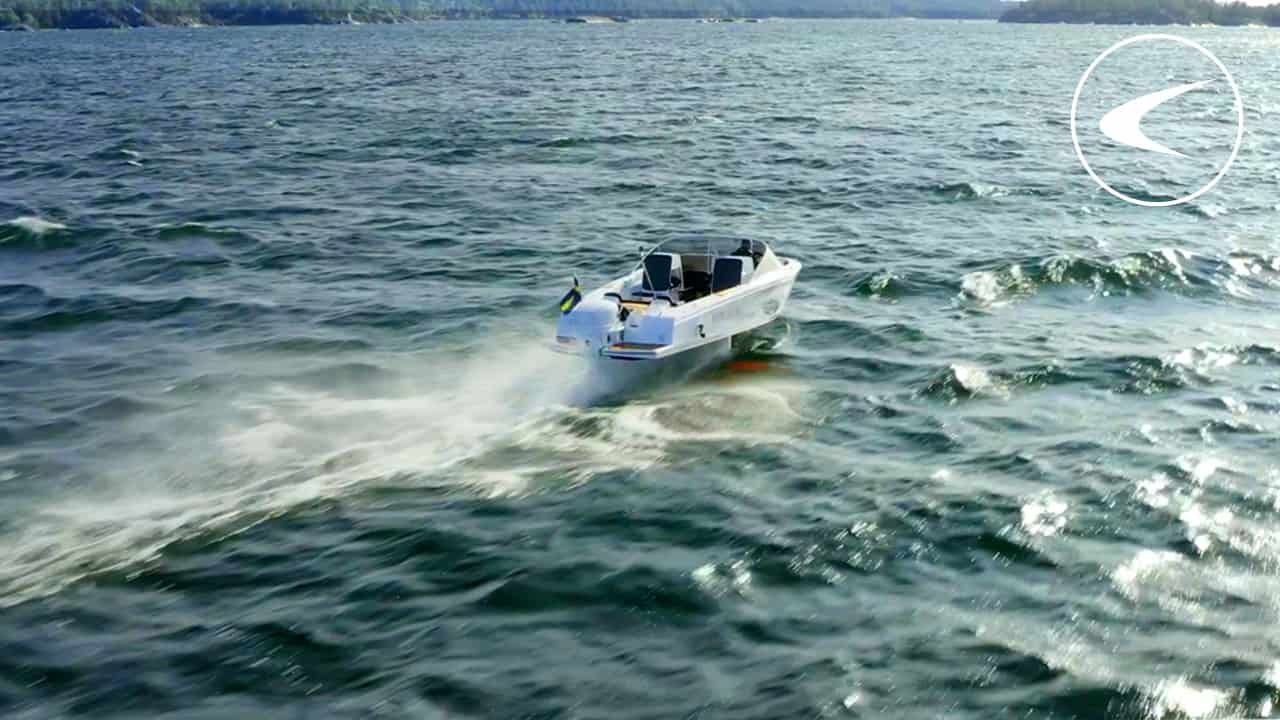
Foiling in high waves
See the C-7 foil in 15 m/s of wind wakes
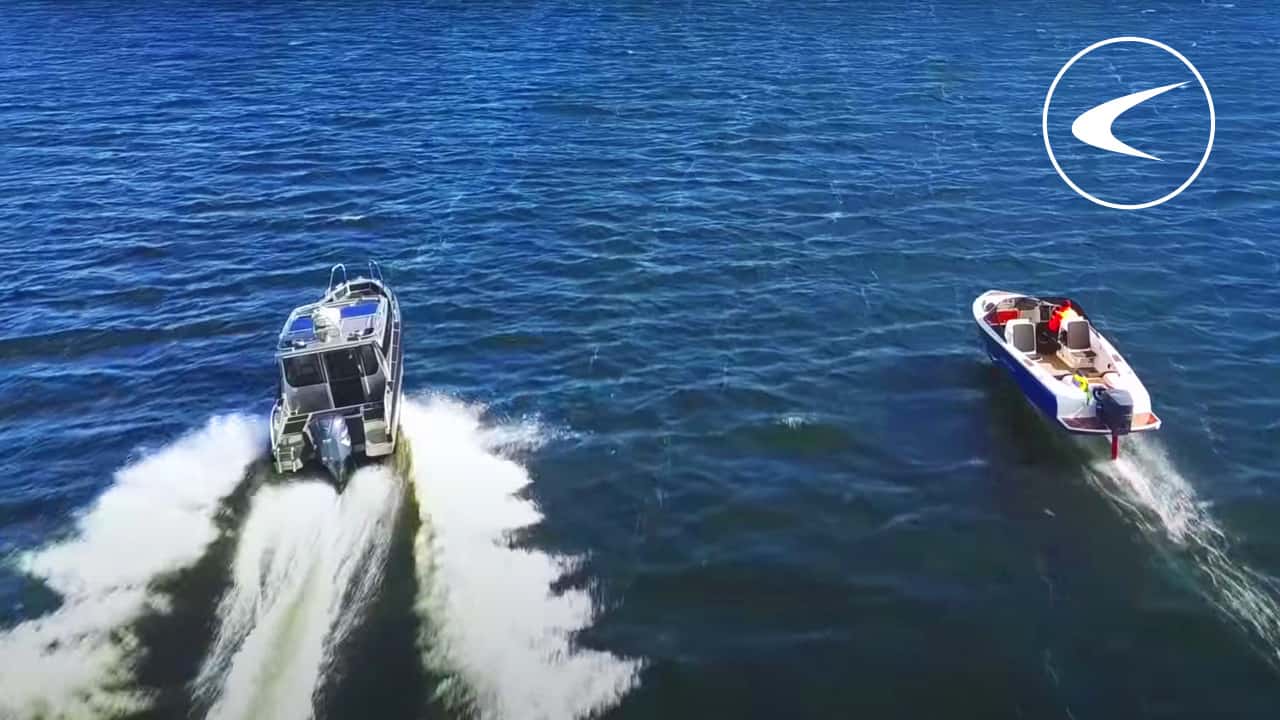
C-7 vs regular boats
See a direct comparison to a fossil fuel boat

2024 Candela C-8 Open Daycruiser
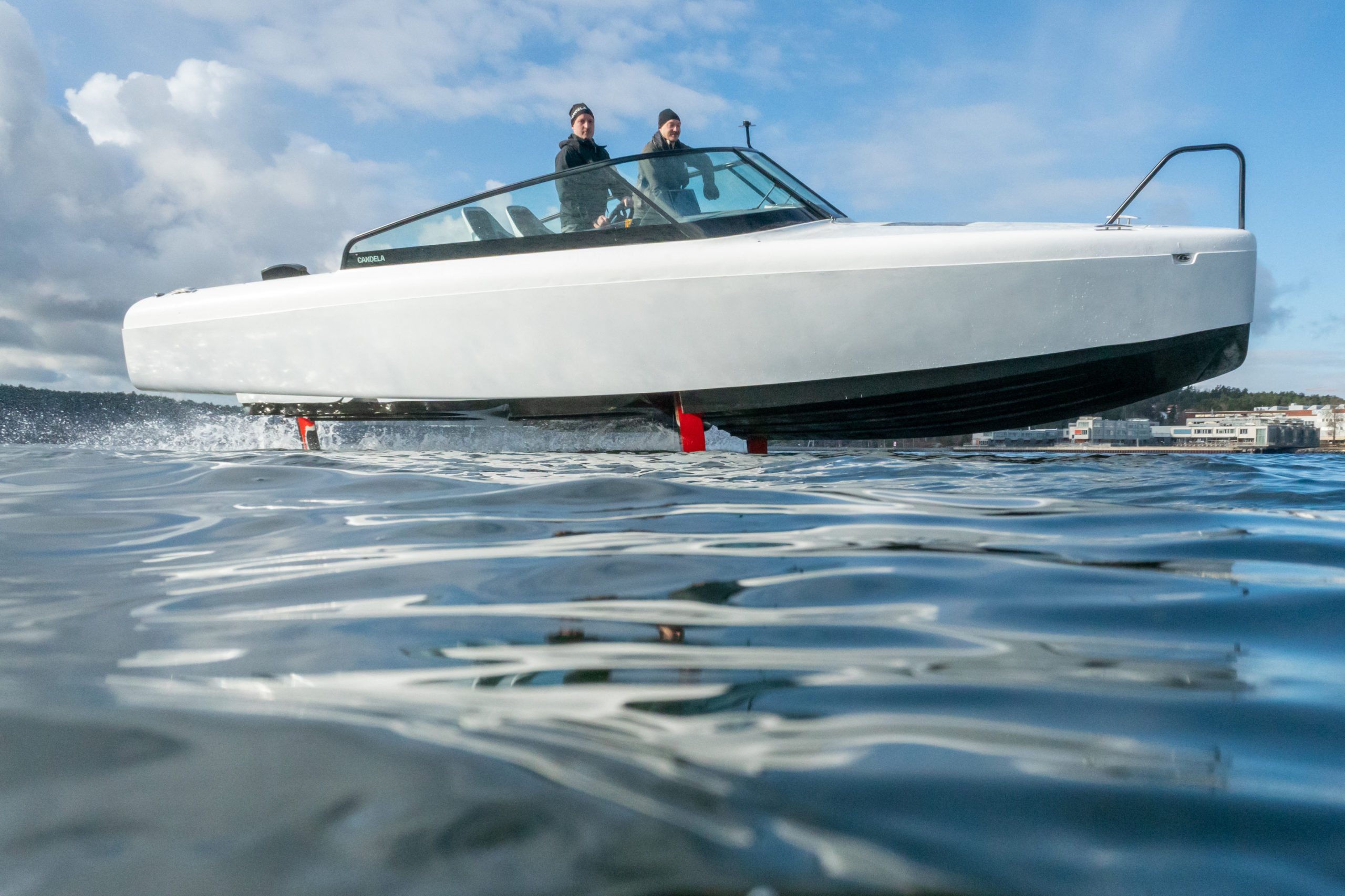
It feels like we’re flying

Electric-boat maker Candela gets cash infusion to scale up production
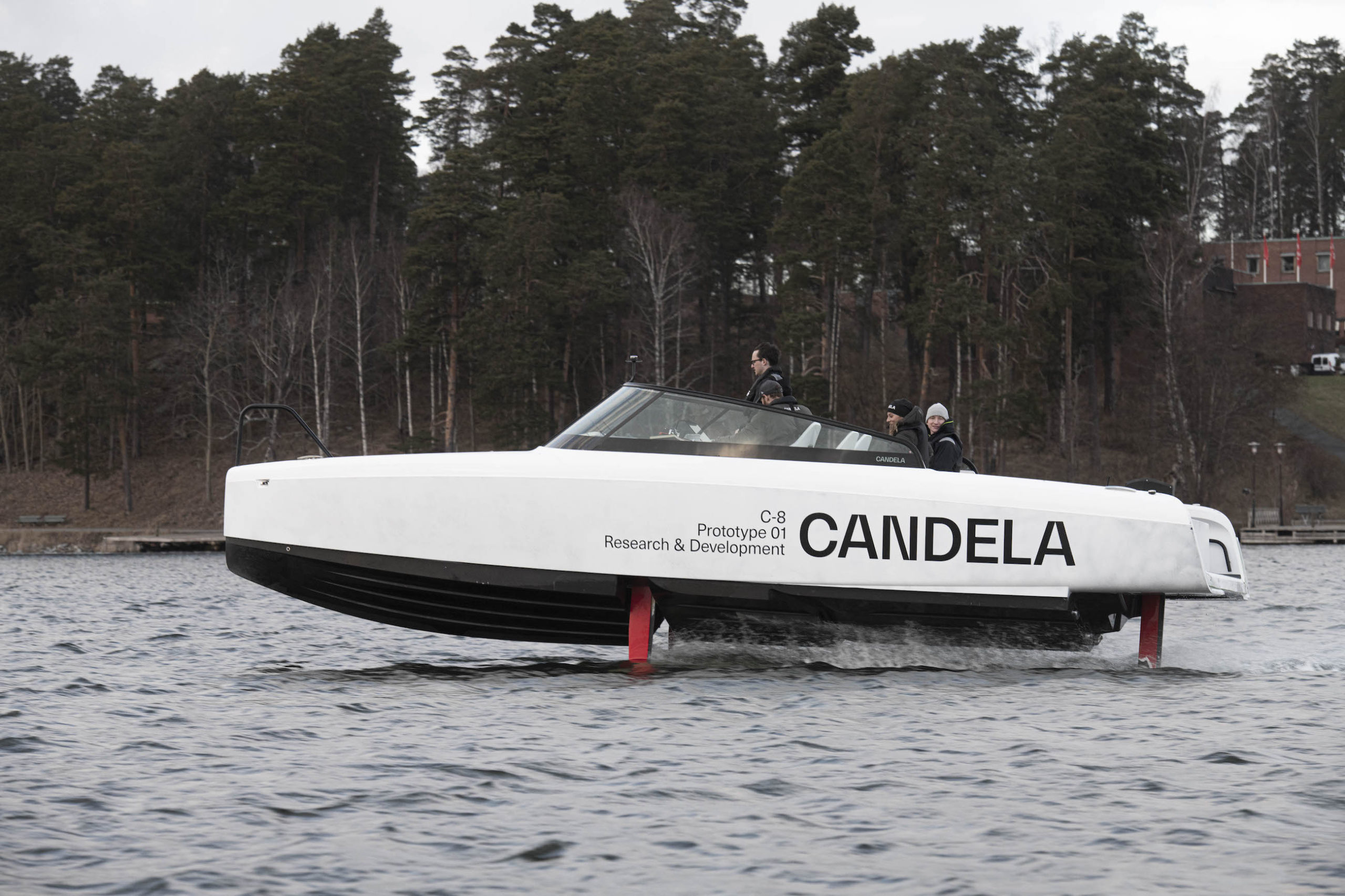
Its C-8 boat model has already become the best-selling electric speed boat in Europe (and it actually outsells most internal combustion engine-powered boats in its premium category).
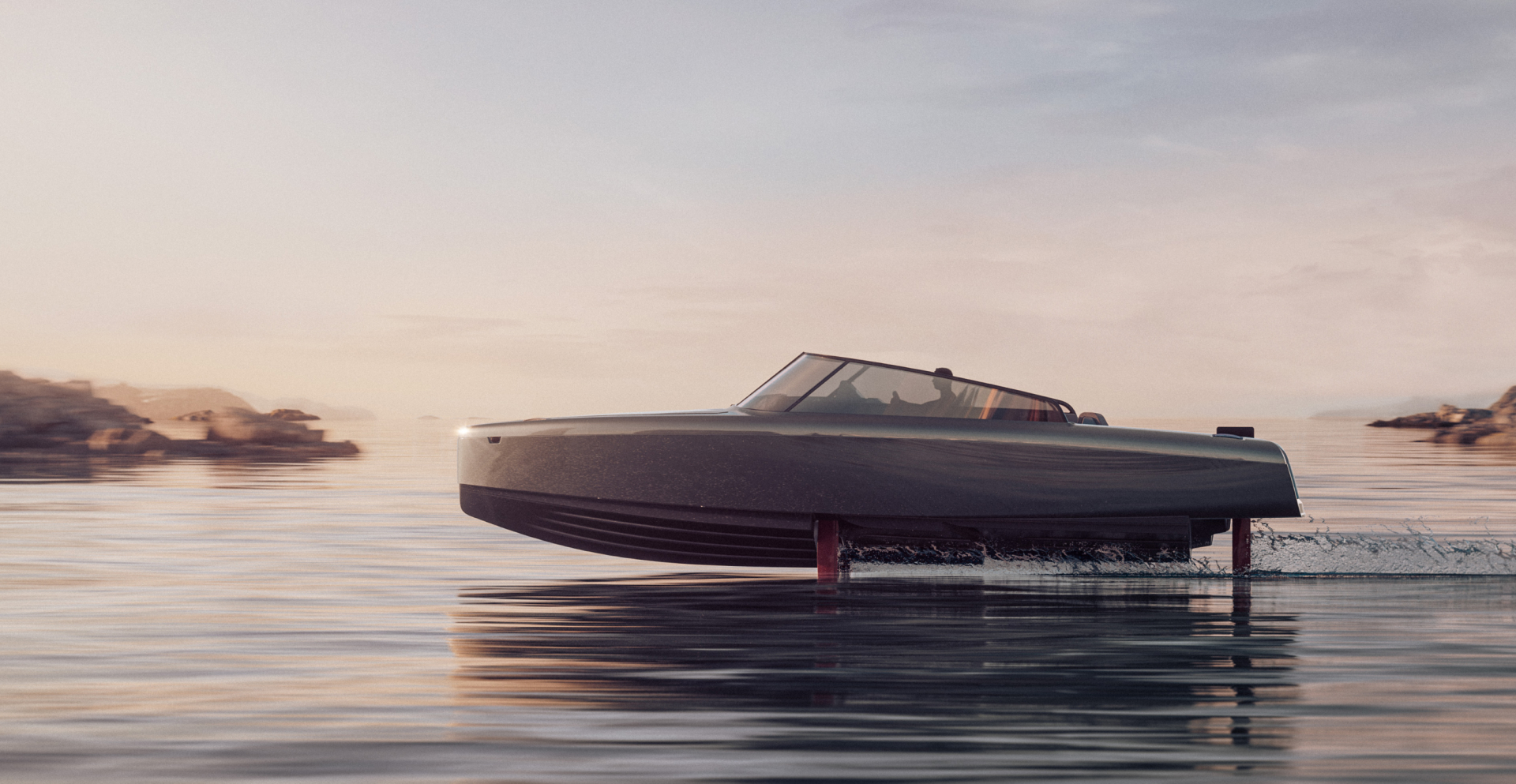
Candela’s hydrofoiling electric boats attract $24M investment in a bid for cleaner seas
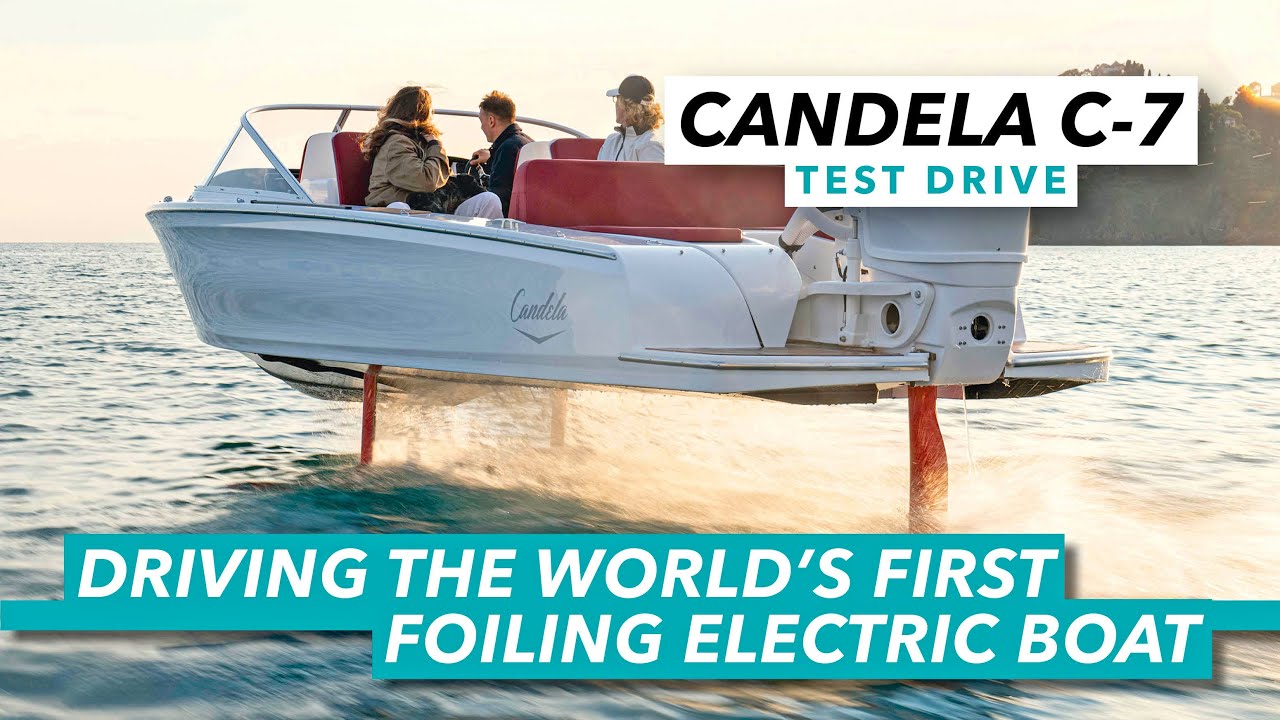
At a stroke it makes every other boat feel strangely low-tech, as if Candela has finally managed to reinvent the wheel or, perhaps more aptly, discover flight.
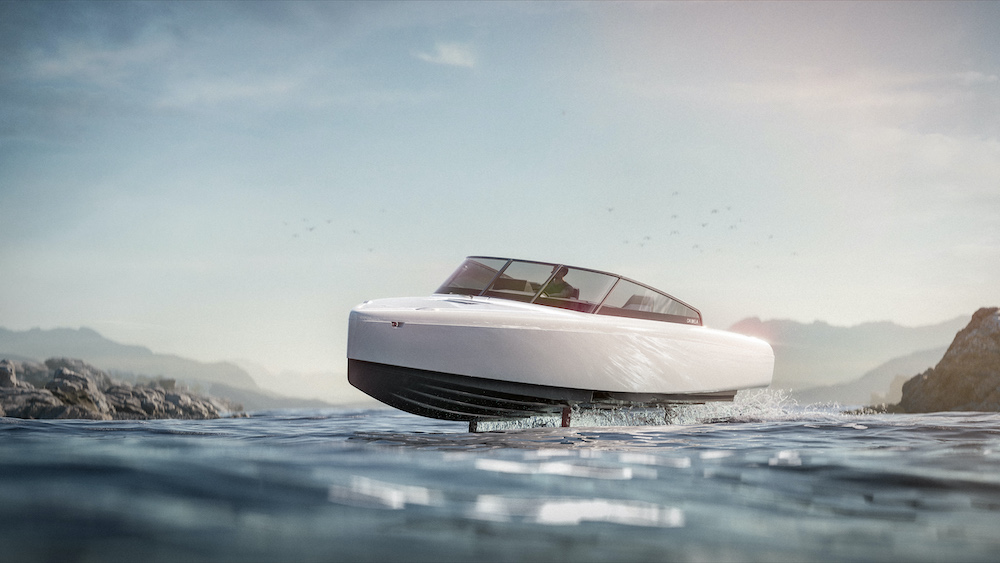
Candela’s C-8 flying electric boat is already selling better than gas-powered boats
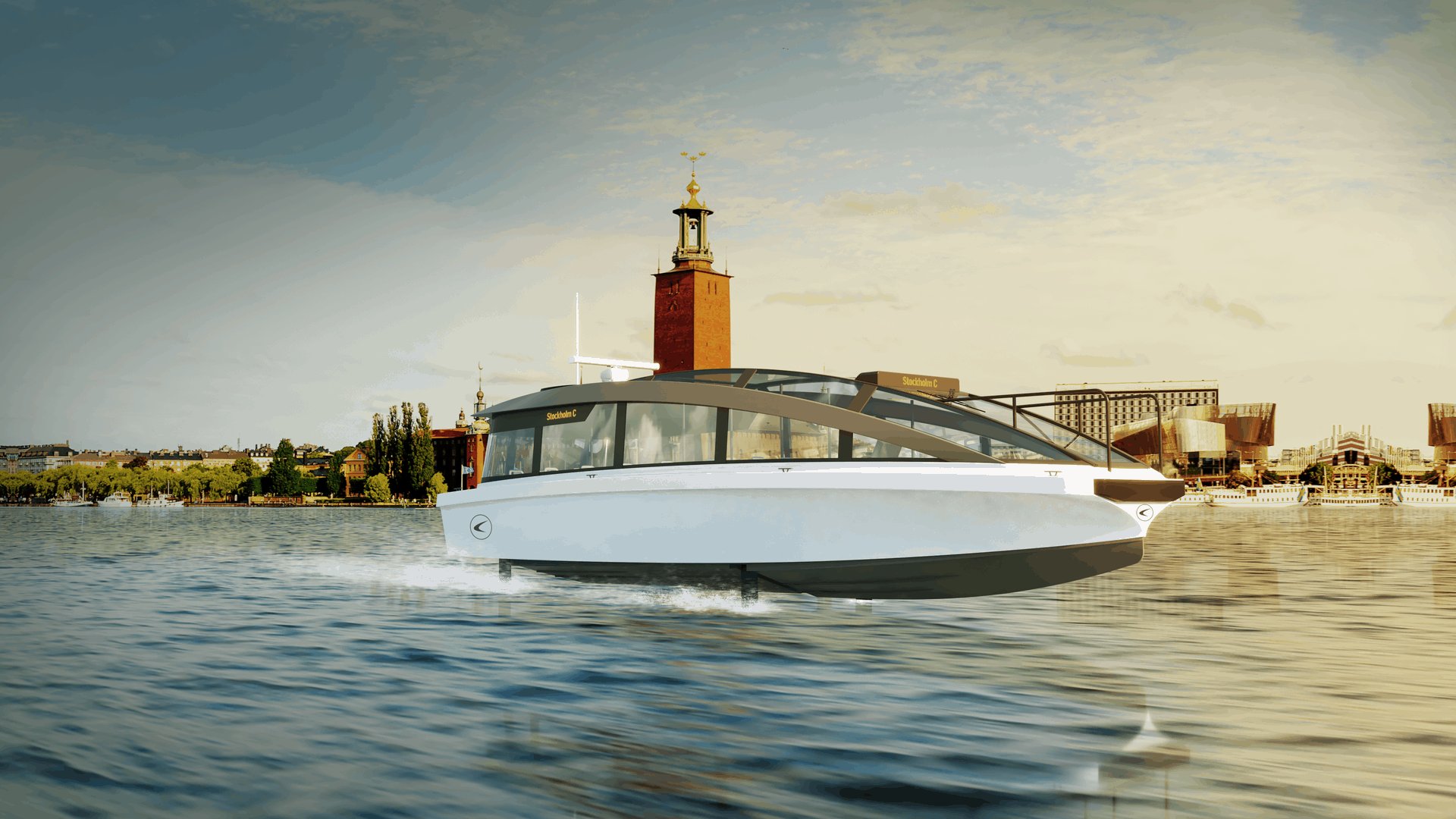
The result is a super stable boat, you can’t really get seasick on board.
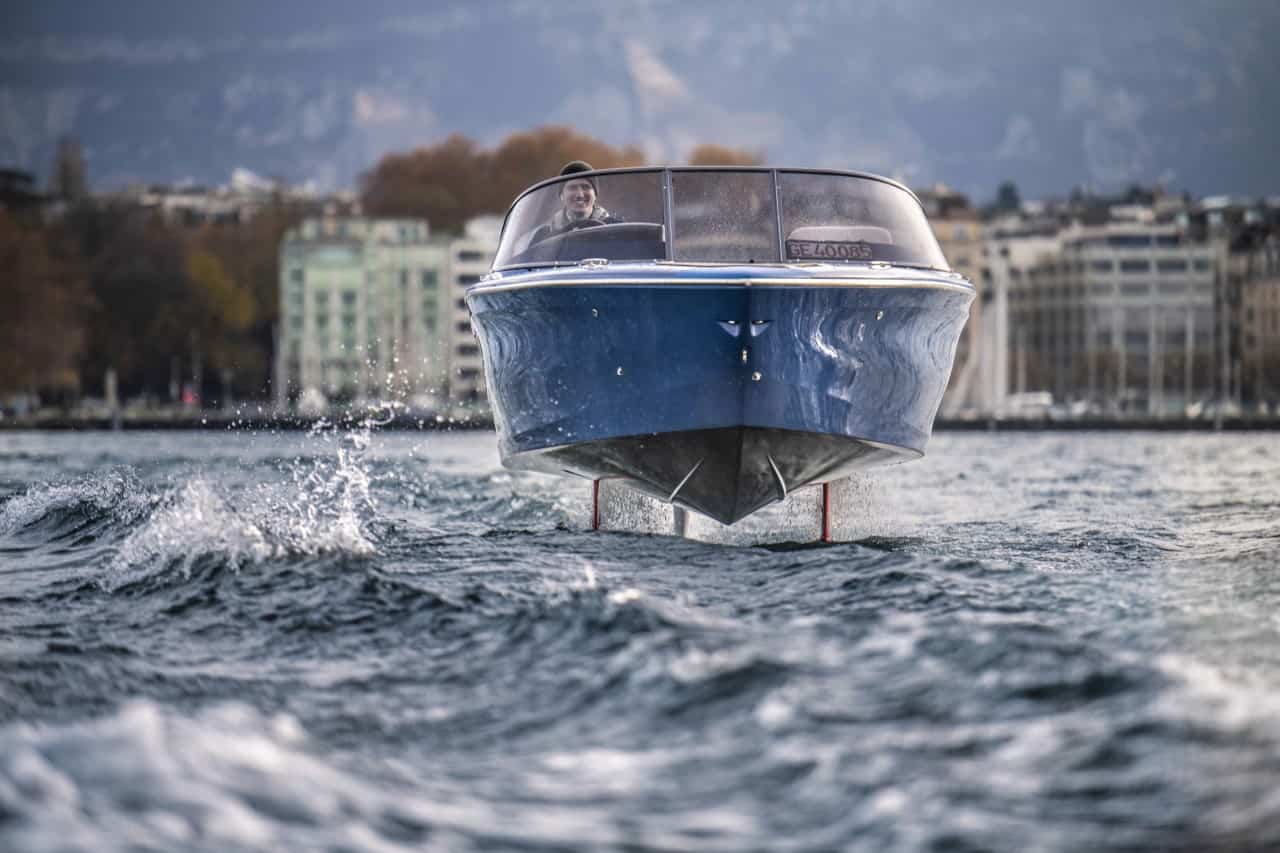
Teslas making waves: A new generation of electric motorboats takes to the water
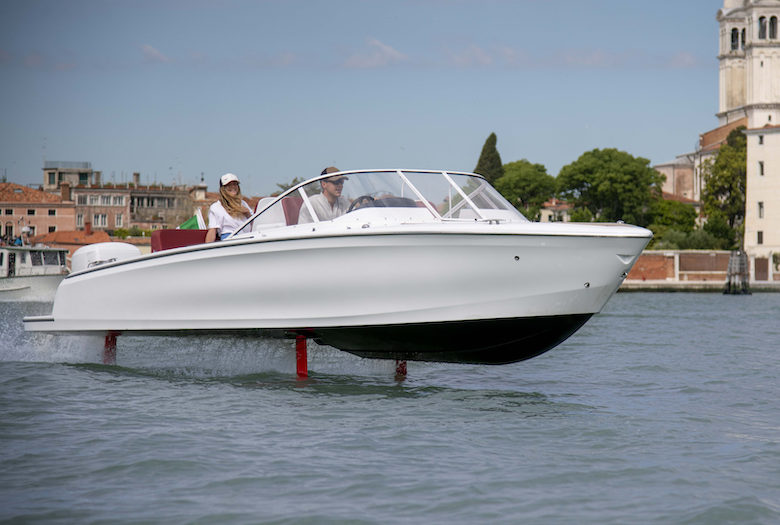
The world’s first AI-powered, all-electric hydrofoil boat that automatically stabilises itself for a smoother ride

I tested a flying electric boat and it was even cooler than it sounds

Swedish Tech Company Breaks Sales Records With Disruptive New Long-Range Hydrofoiling Electric Speedboat

So, OK, what’s the bottom line? Simply put, the Candela is a better boat. Just like a Tesla is a better car and an F150 Lightning is a better F150. This is the future, kids, and it’s awesome!

Che bello il motoscafo tutto elettrico che vola sull’acqua senza rumore

Fliegen über Wasser
Our technology
Enabling a unique experience.
Explore our technology
Explore our fleet Electric hydrofoiling is revolutionizing both leisure and professional boating. Learn more about each model below.
Leisure boats
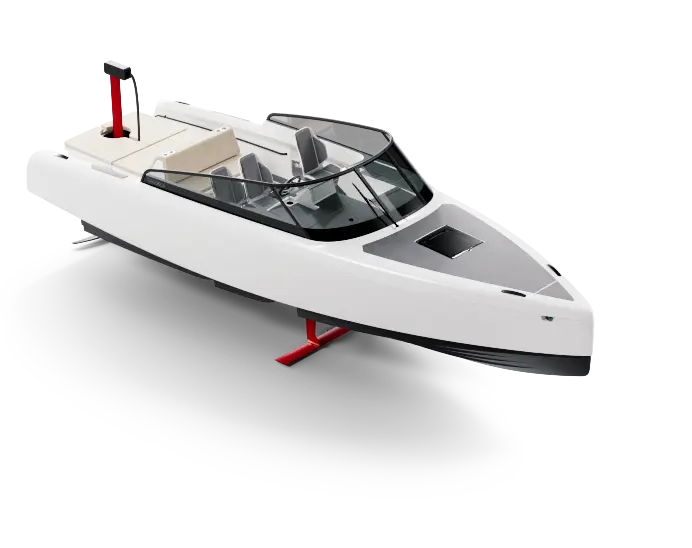
Professional boats

Join our newsletter to get sneak peaks, early access and more.
- AROUND THE SAILING WORLD
- BOAT OF THE YEAR
- Email Newsletters
- America’s Cup
- St. Petersburg
- Caribbean Championship
- Boating Safety

Boat of the Year 2020 F101: Best Foiler
- By Dave Reed
- Updated: December 10, 2019
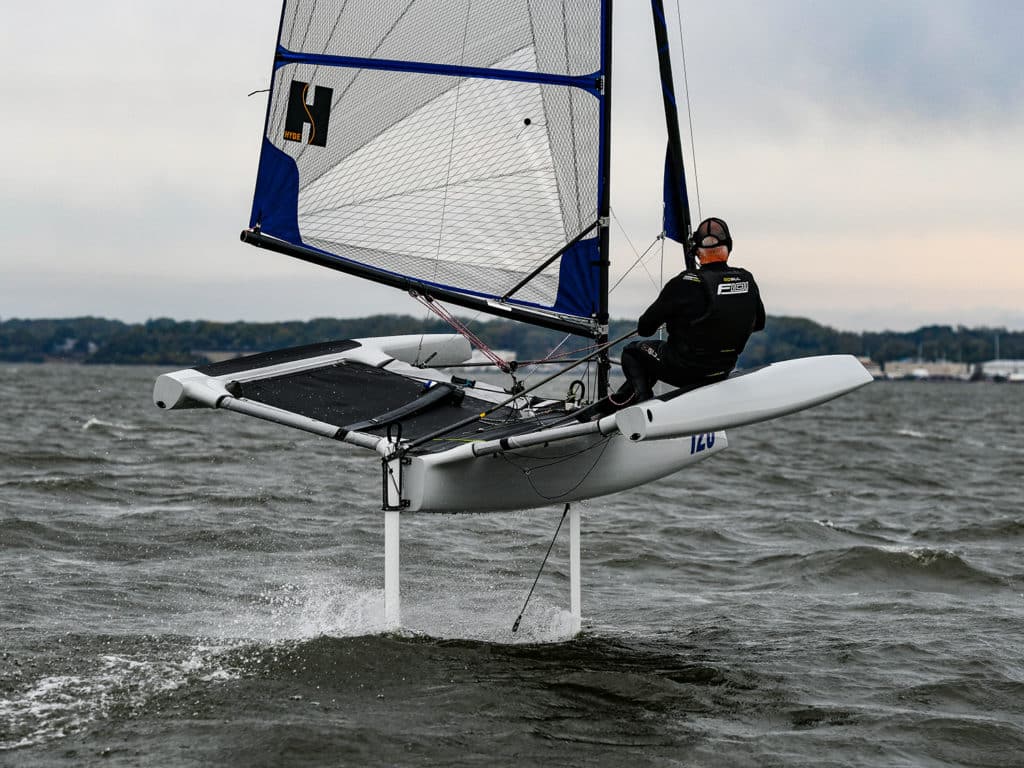
At A Glance
Price As Sailed: $24,750
Design Purpose: Learn to foil, advance skills
Crew List: One or two
Rob Andrews and his business partner Alan Hillman have been teaching foiling for a few years now, and one thing they’ve learned is we get better by sailing, not by swimming. Thus was the genesis of the F101, a craft with which they could teach the fundamentals of foiling—without the crash and burn. But it’s not just a learn-to-foil boat, either. It’s a platform with which new and experienced converts alike can take their foiling skill set to a higher level.
The key to mastering the F101, Andrews explains, is grasping righting moment. With the trimaran platform, you get plenty of it, as well as a stable boat that’s more forgiving than any other small foiler. “The trimaran configuration gives you righting moment direct from the foil in the middle hull,” he says, “and gives a measure of safety. It’s hard to capsize the boat.”
The judges learn as much when it comes time to sail the F101. In 15 knots and more, and a steep Chesapeake chop, Powlison is first to give it a go. He settles into the boat, gets his bearings, perches skittishly on the weather hull, sheets on the mainsail (no need to use the boat’s gennaker above 12 knots) and off he goes like a bat out of hell, popping up on the foils without even trying.
“The trick is getting used to the sensation of heeling to windward,” he says. “It takes a bit of trust. Once foiling, it’s quiet and fast, and I felt like I had to be really active on the mainsheet to keep it on the foils.”
That’s true of any foiler, but the beauty of the F101, the judges agree, is when you do lose it, it’s no big deal. The boat drops off its foils, the bows auger in and you get a face full of water; but just reset, bear away and try again.
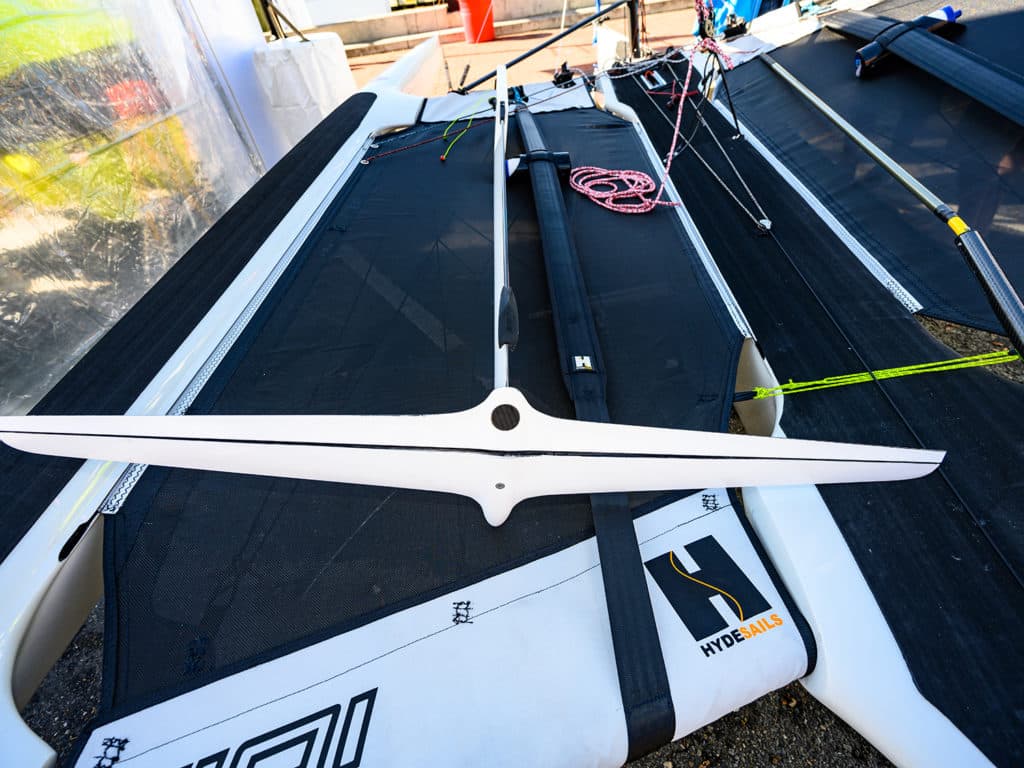
“The hull shape picks up the buoyancy gently,” Stewart says, “which makes it depress smoothly and prevents it from pitchpoling. When I dumped it a few times I thought I was going in, but not a chance. You quickly realize there’s plenty of floatation there to save you. In flat water, with one day of training you’d get up to speed quickly.”
When teaching people to foil, Hillman starts with “skimming,” a ride height barely above the surface. As the sailor becomes more accustomed to how the boat behaves, there’s a simple line adjustment at the foil head: Dial it up one setting and increase your ride height.
As you’re sailing, the foil wand hanging behind the trailing edge effectively feels where the boat is riding relative to the water and actuates the main flap. In light winds, it gives you more lift, and the boat pops up on the foil. Get too high, and the wand drops down even further, forcing negative lift on the flap, which brings you back down to your desired height and prevents the foils from breaking the surface.
In terms of construction, the judges praise its carbon-and-epoxy build quality and the all-up weight of 180 pounds, which makes it easy to get to and from the water. With the F101 sitting on its dolly in the boat park, going sailing is as simple as pulling back the covers, hoisting the main and launching from a dock, beach or boat ramp with minimal fuss.
“What I like about it is that it’s one of those boats that you buy and don’t need to add anything to it,” Allen says. “There’s nothing to change out or upgrade.”
For simplicity, the boat is set up with adjustments that let you ratchet up the experience as you climb the learning curve. On the rudder foil, for example, there is a clear numbering system so that as you twist the tiller extension, you change the rudder rake. The baseline setting is zero, and it’s the same for the main foil. The only thing left is to balance the forces with the mainsheet.
“When I first got up on the foils, I was thinking to myself, ‘This is too easy; I should be working harder,’ ” Powlison says. “As they said, this boat solves a lot of the problems associated with other foiling dinghies. It’s a great high-performance boat that represents the next step in making foiling accessible to the public.”
See All Winners
Other Winners:
- 2020 Boat of the Year
- Best Crossover
- Best Multihull
- Best Foiler
- Best Dinghy
- More: BOTY , boty 2020 , foils , Sailboats
- More Sailboats

Nautor Swan Has A New Pocket Rocket

Pogo Launches its Latest Coastal Rocket

A Deeper Dive Into the Storm 18

2024 Boat of the Year Best Recreational Racer: Z24
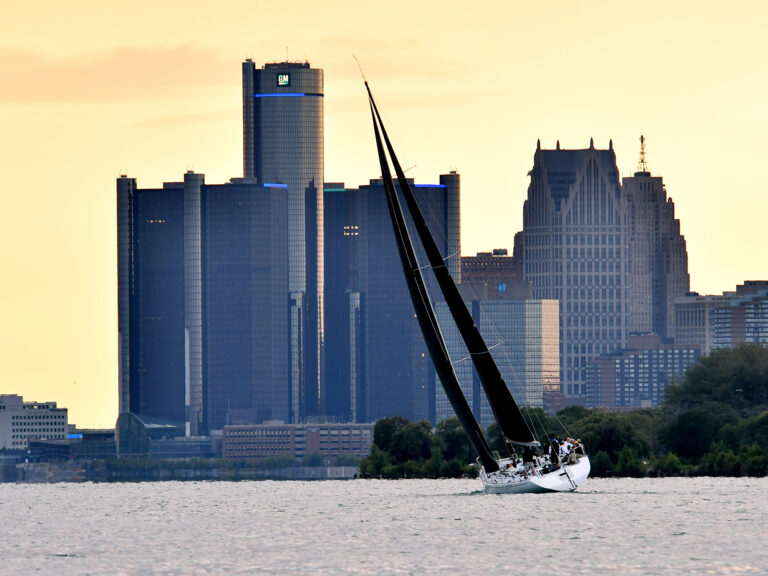
Local Knowledge For Detroit
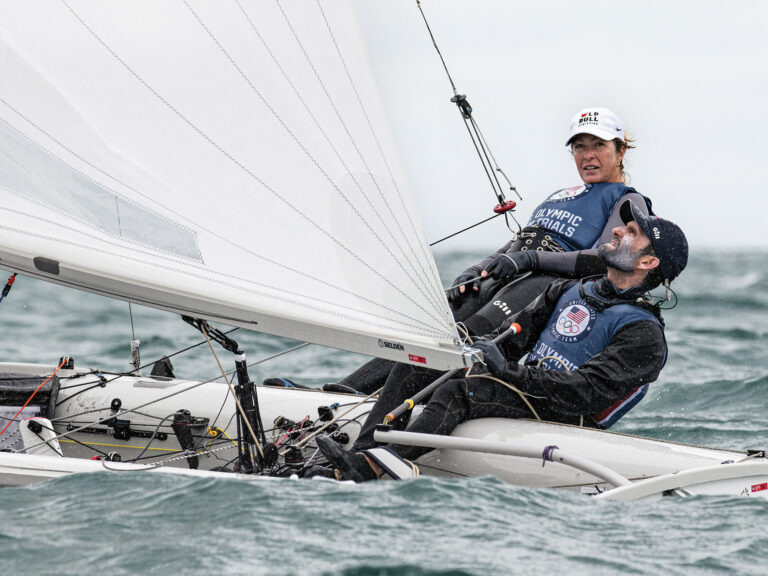
From Trials to Games
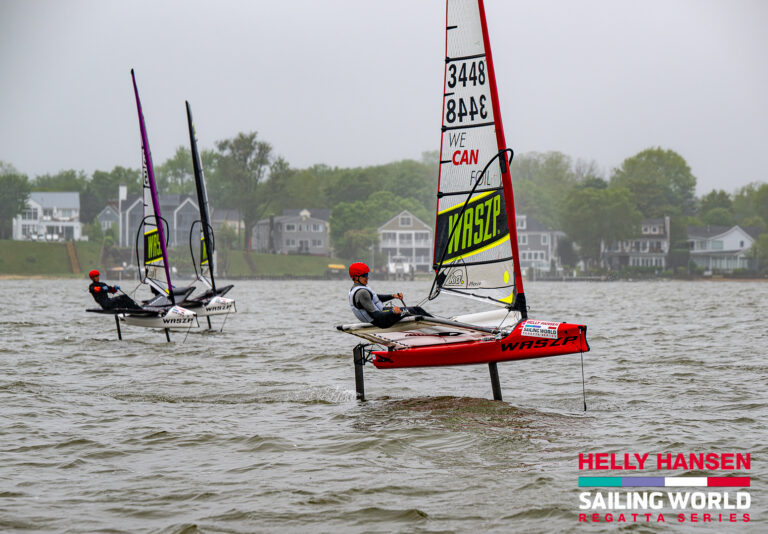
Brothers of the Waszp
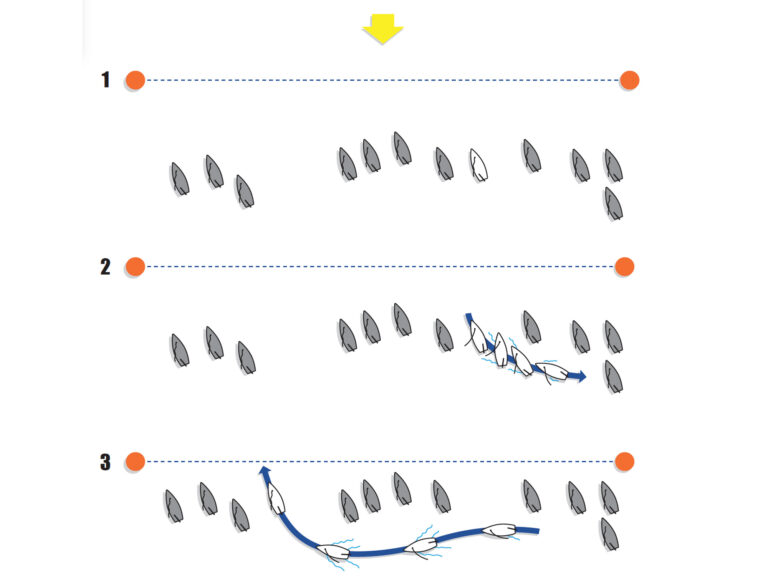
Four High-Level Starting Moves

- Digital Edition
- Customer Service
- Privacy Policy
- Cruising World
- Sailing World
- Salt Water Sportsman
- Sport Fishing
- Wakeboarding

How Do Hydrofoil Catamarans Work? (The Science Behind It Explained)

Have you ever wondered what it would be like to fly on the water? Hydrofoil catamarans are designed to do just that, and many people are amazed by the experience of gliding across the water at speeds that are unheard of with traditional boats.
But what are hydrofoil catamarans, and how do they work? In this article, well explain the science behind these revolutionary boats and explore the advantages, design considerations, and safety precautions that come with them.
Well also look at some examples of hydrofoil catamarans to show you just how powerful and advanced they are.
So, if youve ever wanted to know how these boats work and what sets them apart, read on!
Table of Contents
Short Answer
Hydrofoil catamarans work by using foil-shaped wings that protrude from the bottom of the boat, below the water line.
The foils are designed to lift the vessel out of the water, reducing the surface area touching the water, and therefore reducing drag.
As the boat moves forward, the airflow on the foils generate lift, causing the boat to rise out of the water and glide along the surface.
The foils act as an air cushion, allowing the boat to travel at higher speeds than a regular catamaran.
What are Hydrofoil Catamarans?
Hydrofoil catamarans are a type of boat that use hydrofoils to lift the hull above the water.
This reduces drag, allowing for faster and smoother sailing than traditional boats.
Hydrofoils are wings that protrude from the hull of the boat and are designed to lift the boat out of the water.
This reduces the amount of water resistance and allows the boat to travel faster.
The hydrofoils are adjustable, allowing the boat to be tuned to the desired speed.
Hydrofoil catamarans offer an efficient and fast way to travel on the water, making them a popular choice for recreational and competitive sailing.
The hydrofoils work by creating lift as the boat moves through the water.
As the boat moves, the water flow pushes against the hydrofoils and creates a pressure differential.
This pressure differential creates lift, which lifts the boat out of the water and reduces drag.
The hydrofoils also reduce the amount of wave resistance, allowing the boat to glide through the water.
The hydrofoils can be adjusted to match the speed of the vessel, allowing the boat to be optimized for maximum performance.
The angle of attack of the hydrofoils is also adjustable, allowing the boat to be tuned to the desired speed.
The fins are designed to keep the boat stable and can be adjusted to match the speed of the vessel.
In conclusion, hydrofoil catamarans are a type of boat that uses hydrofoils to lift the hull above the water.
How Do Hydrofoils Work?

Hydrofoils are a type of boat that uses a set of wings or fins to lift the hull above the water.
The hydrofoils are attached to the hull and use the water pressure to propel the boat forward.
The wings of the hydrofoils are designed to reduce the amount of wave resistance, allowing the boat to glide through the water with greater efficiency.
The wings are usually made of lightweight materials such as carbon fiber or aluminum and are designed to produce lift when the boat is moving at a certain speed.
The wings can be adjusted to different angles, which can increase or decrease the lift.
When the boat is moving, the hydrofoils create a low-pressure zone underneath the boat.
This low-pressure zone reduces the amount of drag and improves the efficiency of the boat, allowing it to move faster and more smoothly.
The hydrofoils also help to reduce the amount of wave resistance, allowing the boat to glide through the water with less effort.
They are suitable for all kinds of sailing, from racing to cruising.
Hydrofoils can be adjusted to match the speed of the vessel, making them an excellent choice for those who want to sail faster.
Hydrofoils are also a great choice for those who want to reduce their environmental impact.
Hydrofoils reduce drag, which means that they require less fuel to move the boat, resulting in lower emissions.
Hydrofoils are a great way to reduce the environmental impact of sailing while simultaneously enjoying a faster and smoother ride.
Advantages of Hydrofoil Catamarans
Hydrofoil catamarans offer a unique and efficient way to travel on the water.
The hydrofoil design reduces drag, allowing the boat to glide through the water with greater speed and stability than traditional boats.
The hydrofoils are attached to the hull and use the water pressure to propel the boat forward, creating less wave resistance than a traditional boat.
This allows the boat to move faster and smoother, while using less fuel.
Additionally, the fins can be adjusted to match the speed of the vessel, making it easier to control.
The design of the hydrofoil catamaran also allows it to ride high above the water, reducing drag and contact with the water surface.
This allows for a smoother ride, allowing the boat to move faster with less fuel consumption, and less noise and vibration.
Additionally, the hull shape of the hydrofoil catamaran is designed to increase its stability and maneuverability, further reducing drag and allowing for a faster and smoother ride.
The combination of the reduced drag, increased stability, and smoother ride makes hydrofoil catamarans a popular choice for recreational and competitive sailing.
The ability to move quickly and efficiently makes them ideal for racing, and the increased stability and maneuverability makes them well-suited for recreational activities such as sightseeing or fishing.
Additionally, the reduced contact with the water surface can help to protect the hull from damage, making the boat more durable and longer-lasting.
Overall, hydrofoil catamarans offer an efficient and fast way to travel on the water, making them a popular choice for recreational and competitive sailing.
The combination of reduced drag, increased stability, and smoother ride makes them an ideal choice for anyone looking to get the most out of their time on the water.
Factors Affecting Hydrofoil Performance

The performance of a hydrofoil catamaran depends on a variety of factors, including the type of hydrofoil, the size and shape of the hull, and the speed and direction of the wind.
The hydrofoil itself is an important factor in determining the performance of a hydrofoil catamaran.
Different types of hydrofoils offer different levels of lift, drag, and stability, so its important to choose the right hydrofoil for the job.
The size and shape of the hull also affects the performance of the hydrofoil catamaran, as the hull is the part of the boat that provides the buoyancy and helps the boat to stay afloat.
The speed and direction of the wind also affects the performance of a hydrofoil catamaran, as a headwind or tailwind can cause the boat to be pushed or pulled in a certain direction.
Finally, the weight of the vessel also affects the performance of a hydrofoil catamaran, as a heavier boat will require more lift from the hydrofoil to remain afloat.
Design Considerations for Hydrofoil Catamarans
Hydrofoil catamarans are a special type of boat that use a unique design to offer efficient and fast travel on the water.
The key component of the design is the hydrofoil, which is a fin-like structure attached to the hull that uses the water pressure to push it forward.
This reduces drag and wave resistance, resulting in a smoother, faster sailing experience than traditional boats.
When designing a hydrofoil catamaran, there are a few important considerations that engineers must take into account.
The hydrofoils must be designed so that they can be adjusted to match the speed of the vessel, as well as provide stability and reduce wave resistance.
Additionally, they must be constructed from durable materials to ensure they can stand up to the elements and provide a reliable ride.
The shape of the hull also plays an important role in the performance of a hydrofoil catamaran.
A rounded hull is ideal for reducing drag, while a flat hull is better suited for stability.
As for the size of the hydrofoils, they should be big enough to lift the boat above the water, but not so large that they create too much drag.
Finally, the placement and size of the hydrofoils must be carefully calculated to ensure the boat can reach its maximum speed while remaining stable.
It is also important to consider the weight of the boat and its passengers when designing a hydrofoil catamaran, as this will affect the performance of the hydrofoils.
By taking all of these factors into consideration, engineers can design hydrofoil catamarans that are both fast and stable, providing an enjoyable and efficient ride.
Examples of Hydrofoil Catamarans

Hydrofoil catamarans come in a variety of shapes and sizes, making them suitable for a variety of applications.
Popular examples of hydrofoil catamarans include the America’s Cup boats, the A-class catamaran, as well as the Nacra and Tornado catamarans.
The America’s Cup boats are the fastest boats in the world and are designed to achieve speeds of up to 50 knots.
The A-class catamarans are lightweight and designed for racing, while the Nacra and Tornado catamarans are designed for recreational sailing.
Each of these boats use hydrofoils to reduce drag and improve performance.
In addition to recreational and competitive sailing, hydrofoil catamarans are also used for transportation.
The Sea Eagle is a high-speed ferry that uses hydrofoils to reduce drag and increase its top speed.
The ferry is capable of carrying up to 250 passengers and can reach speeds of up to 50 knots.
Other examples of hydrofoil catamarans include the hovercraft, which uses a combination of air and water pressure to lift the vessel above the water, and the AirFish, which uses a combination of air and water pressure to fly above the water.
Hydrofoil catamarans are an efficient and fast way to travel on the water, making them popular for recreational and competitive sailing, as well as for transportation applications.
The hydrofoils reduce drag and increase performance, allowing these boats to reach speeds of up to 50 knots.
The design of the hydrofoils can also be adjusted to match the speed of the vessel, allowing for a smoother and more efficient ride.
Safety Precautions for Hydrofoil Catamarans
Hydrofoil catamarans are a popular choice for recreational and competitive sailing due to their efficiency and speed.
However, these vessels require extra caution to ensure the safety of all passengers.
Before operating a hydrofoil catamaran, it is important to understand the safety precautions needed to ensure an enjoyable and safe experience.
First, always wear a personal floatation device (PFD) when operating a hydrofoil catamaran.
This will provide a layer of protection if you fall overboard.
Additionally, if the hull of the boat is lifted above the water, it is important to check the area for any debris or objects that may be submerged.
This could cause damage to the boat or injure passengers.
It is also important to check the weather conditions before going out on a hydrofoil catamaran.
Wind, waves, and storms can all be hazardous for these vessels.
They are not suitable for rough water and should be avoided during inclement weather.
Additionally, it is important to check the engine and fuel levels before embarking on any voyage.
Finally, it is important to understand the limitations of the hydrofoil catamaran.
These vessels are designed for speed and maneuverability, not stability.
They are not intended for large groups or for carrying heavy cargo.
The hydrofoil system can also be easily damaged by impacts with rocks and other objects so it is important to be aware of your surroundings and avoid any obstacles.
By taking the proper safety precautions, you can ensure an enjoyable and safe experience while operating a hydrofoil catamaran.
Always wear a PFD, check the weather conditions, and understand the limitations of the vessel before going out on the water.
With the proper preparation, you can enjoy the speed and efficiency of a hydrofoil catamaran for many years to come.
Final Thoughts
Hydrofoil catamarans are a unique type of boat that offers an efficient, fast, and smooth sailing experience.
The hydrofoils lift the hull out of the water, reducing drag and wave resistance, allowing the boat to glide through the water.
With the right design considerations and safety precautions, hydrofoil catamarans can be an enjoyable and safe way to travel on the water.
If youre looking for a fast and efficient way to get out on the water, hydrofoil catamarans may be the perfect option for you.
James Frami
At the age of 15, he and four other friends from his neighborhood constructed their first boat. He has been sailing for almost 30 years and has a wealth of knowledge that he wants to share with others.
Recent Posts
When Was Banana Boat Song Released? (HISTORICAL INSIGHTS)
The "Banana Boat Song" was released in 1956 by Harry Belafonte. This calypso-style song, also known as "Day-O," became a huge hit and remains popular to this day for its catchy tune and upbeat...
How to Make Banana Boat Smoothie King? (DELICIOUS RECIPE REVEALED)
To make a Banana Boat Smoothie King smoothie at home, start by gathering the ingredients: a ripe banana, peanut butter, chocolate protein powder, almond milk, and ice. Blend the banana, a scoop of...

COMMENTS
The flight control system, combined with numerous fine-tuned innovations, ensures safe foiling even in strong winds and rough seas.. Stable flight attitude allows pushing hard, so in good conditions, iFLY reaches high boat speed beyond 30 knots in a controllable way. IFLY15 offers freedom to fly alone or in pairs.
Performance. Handling. Manoeuvre. Class Association. A great number of innovations all over the catamaran and the perfect match of all components allow controlled high-speed foiling experience. iFLY15 is full of innovations, e.g. in hull design, hydrofoils, rudders, automatic flight control system, two-layer wing trampoline, high performance ...
A hydrofoil catamaran is an excellent option for someone looking for an exciting sailing experience. Visit Fulcrum Speedworks today for more information. ... Because the UFO is a very small catamaran, while floating the hulls float relatively deep in the water and create lateral resistance, like the hulls on a hobie 16 or hobie wave. This means ...
Hydrofoil catamarans can reach speeds of up to 40 knots (46 mph) or more, depending on the design and conditions. The foils on a hydrofoil catamaran can lift the hulls out of the water, reducing drag and allowing for a smoother and faster ride. Hydrofoil catamarans are used for various purposes, including racing, recreational sailing, and even ...
The Insetta 35IFC was designed with a singular vision… to be the best-performing center console sport fishing catamaran in its class. Enjoy unmatched performance, range, and efficiency thanks to the 35IFC's hydrofoil-assisted design. In addition to being the best High-Performance Fishing Catamaran in its class, it also provides a smoother ...
Morrelli & Melvin have been working on power catamaran hydrofoil technology since the 1990s, constantly developing, testing, and improving on the current state of the art. ... But 24' was just a bit too small for the market—especially as bigger outboards and catamarans were making their mark with the performance-oriented fishing and ...
Technical details. The F1x A-class foiling catamaran has a number of unique features that improve performance. For example: Semi ridged trampoline. Gives extra torsional stiffness to the boat and increases its aerodynamic characteristics. Patented main-sheet-wheel-system. For more direct and faster trim of the main sail.
This sportier version was launched at the end of 2020. The 16 Sport is lighter, stiffer and more canvasy, for performance on the water. Intended for private individuals and sailing schools, this hydrofoil catamaran adapts to all sailing programmes, to learn how to fly on the water easily and to fill up with sensations. Image courtesy Befoil.
The Flying Phantom catamaran seems to levitate above the water as it hydrofoils. "It's like removing the handbrake - suddenly everything gets smoother and faster in pure silence.". This ...
This custom vessel features a first-in-class foil-assisted catamaran hull. Specially engineered forward and aft transverse hydrofoils elevate the hull at planing speeds, which substantially reduces drag. The result is significantly increased performance and fuel economy with modest power requirements. This fully welded vessel has been ...
Join boats.com and Marilyn DeMartini in Cape Canaveral Florida along with Tarpon River Boatworks CEO Todd Meyer for a full walkthrough video tour and review ...
iFLY15 is a series-produced sport catamaran for anyone who enjoys high-speed sailing. It's unique Flysafe ® Foil Control System autonomously supports a stabl...
By Zuzana Prochazka. January 31, 2019. In 2013, the world sat up and took notice of foiling boats mostly due to the much-promoted America's Cup. The AC72 catamarans flew across our TV screens with great speed and grace, hardly touching the water. These high-priced models achieved 40 knots in 17 knots of breeze with their T-shaped rudders and ...
10. New Zealand 'R' Class skiff. In New Zealand they love their skiff sailing, and development classes like the doublehanded 'R' Class are prime for new features. The 'R' Class started its project to get the fleet foiling back in 2008 and now there are a clutch of boats racing.
The Art of Catamaran Building new defined. ... (M.A.R.S) - a hydrofoil assisted system that exemplifies our pioneering spirit. From meticulous design to precision engineering, our range of PowerCats showcases a perfect balance of weight distribution, stability, and speed. Our boats are lightweight powerhouses, designed to be up to 50% lighter ...
With razor-sharp hydrofoil catamarans that help them hit speeds of 60 miles an hour, the athletes of SailGP are pushing the limits of physics and human endur...
Set of Daggerboard and Main foil covers, padded, (consisting of four pieces, transport and beach usage) : 290 € (per set) Cradles for road trailer, with universal mount - two versions available, flat bed or for round profile 50mm diameter: 215 € (per pice) Foldable maintenance bench : 140 €. Spare parts kit: 240 €.
A hydrofoil yacht is a sailboat equipped with wing-like foils that lift the hull out of the water as it gains speed. This lifting action reduces the wetted area of the hull, minimizing drag and allowing the yacht to achieve higher speeds. Hydrofoil yachts can be retrofitted on both monohull and multihull sailboats, with different types of foils ...
Electric-boat maker Candela gets cash infusion to scale up production. Its C-8 boat model has already become the best-selling electric speed boat in Europe (and it actually outsells most internal combustion engine-powered boats in its premium category). Candela's hydrofoiling electric boats attract $24M investment in a bid for cleaner seas.
At A Glance. Price As Sailed: $24,750. Design Purpose: Learn to foil, advance skills. Crew List: One or two. Rob Andrews and his business partner Alan Hillman have been teaching foiling for a ...
Hydrofoiling wingsail catamaran 17. A sailing hydrofoil, hydrofoil sailboat, or hydrosail is a sailboat with wing-like foils mounted under the hull.As the craft increases its speed the hydrofoils lift the hull up and out of the water, greatly reducing wetted area, resulting in decreased drag and increased speed. A sailing hydrofoil can achieve speeds exceeding double and in some cases triple ...
Jarrett Bay, builder of custom sportsfishing boats, is perhaps a surprising name to find on the hydrofoil roster. But as reported in Power & Motoryacht' s July 2018 issue, the builder's new 90-footer sports a foil—a 14-foot wing slung beneath the hull, to add lift and increase top speed to a barely believable 50 knots.
Short Answer. Hydrofoil catamarans work by using foil-shaped wings that protrude from the bottom of the boat, below the water line. The foils are designed to lift the vessel out of the water, reducing the surface area touching the water, and therefore reducing drag. As the boat moves forward, the airflow on the foils generate lift, causing the ...